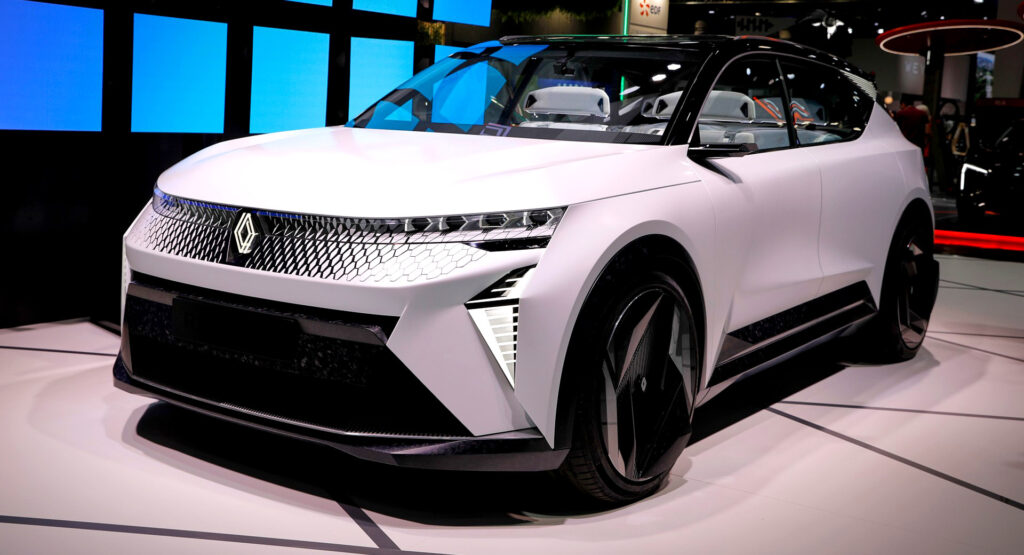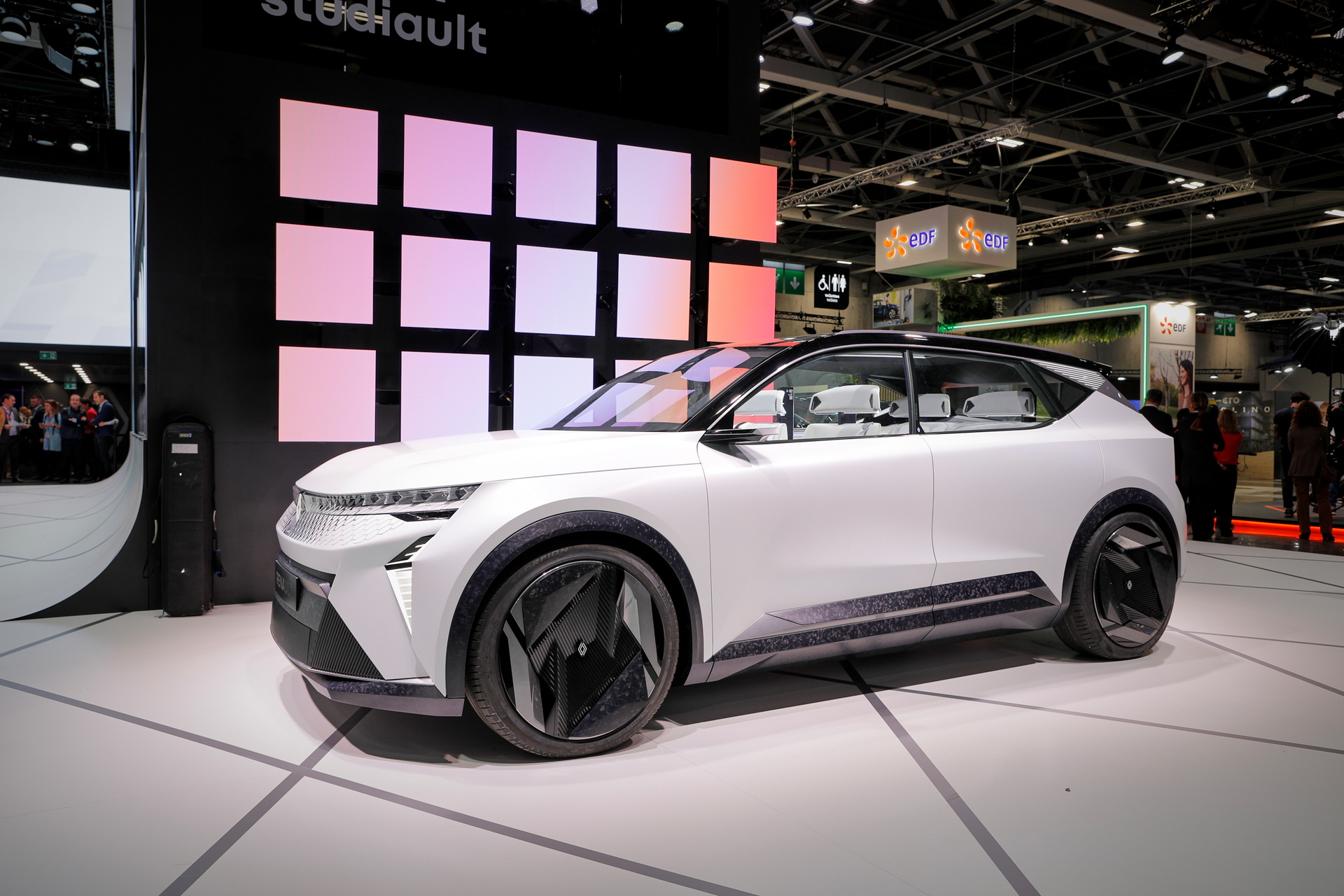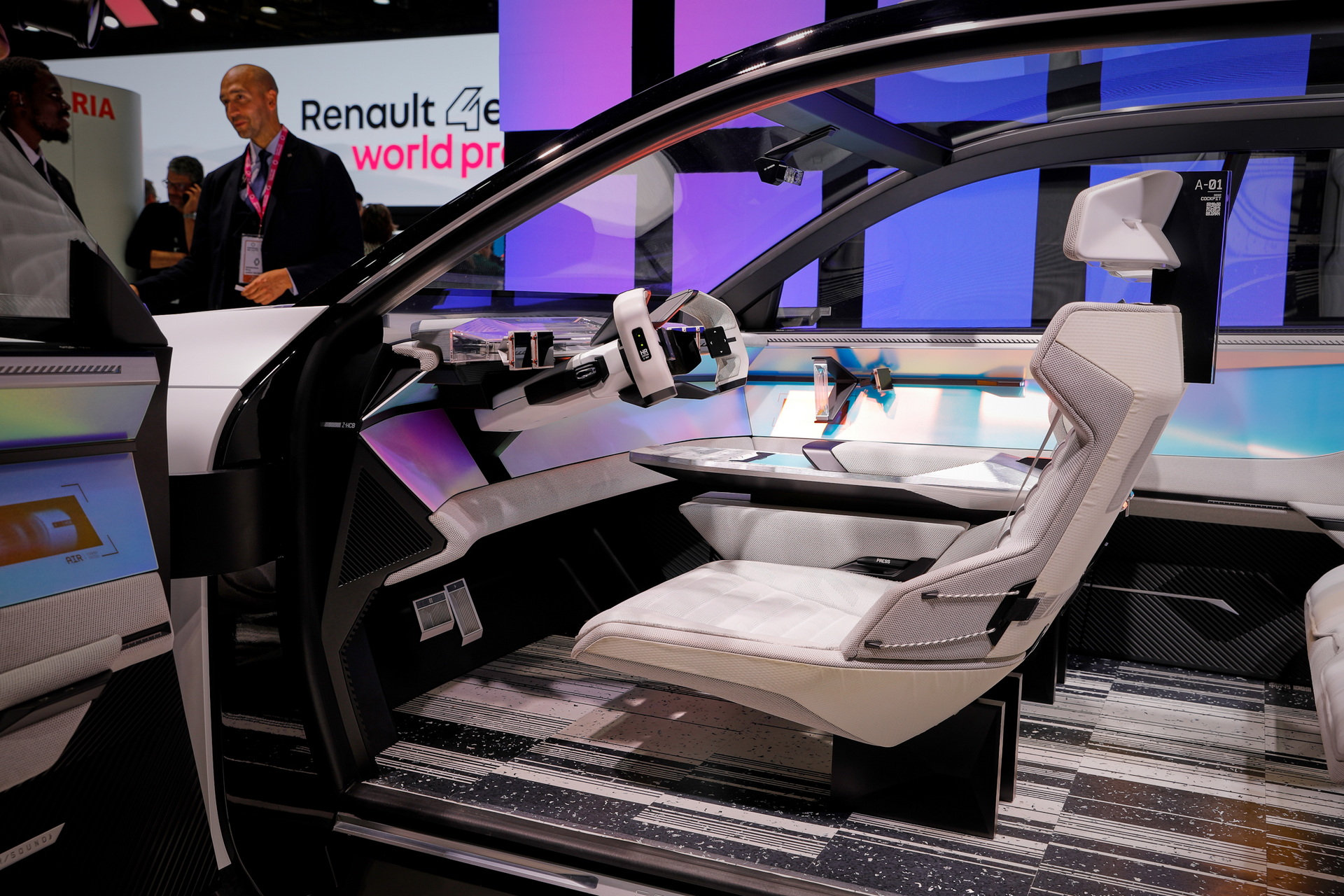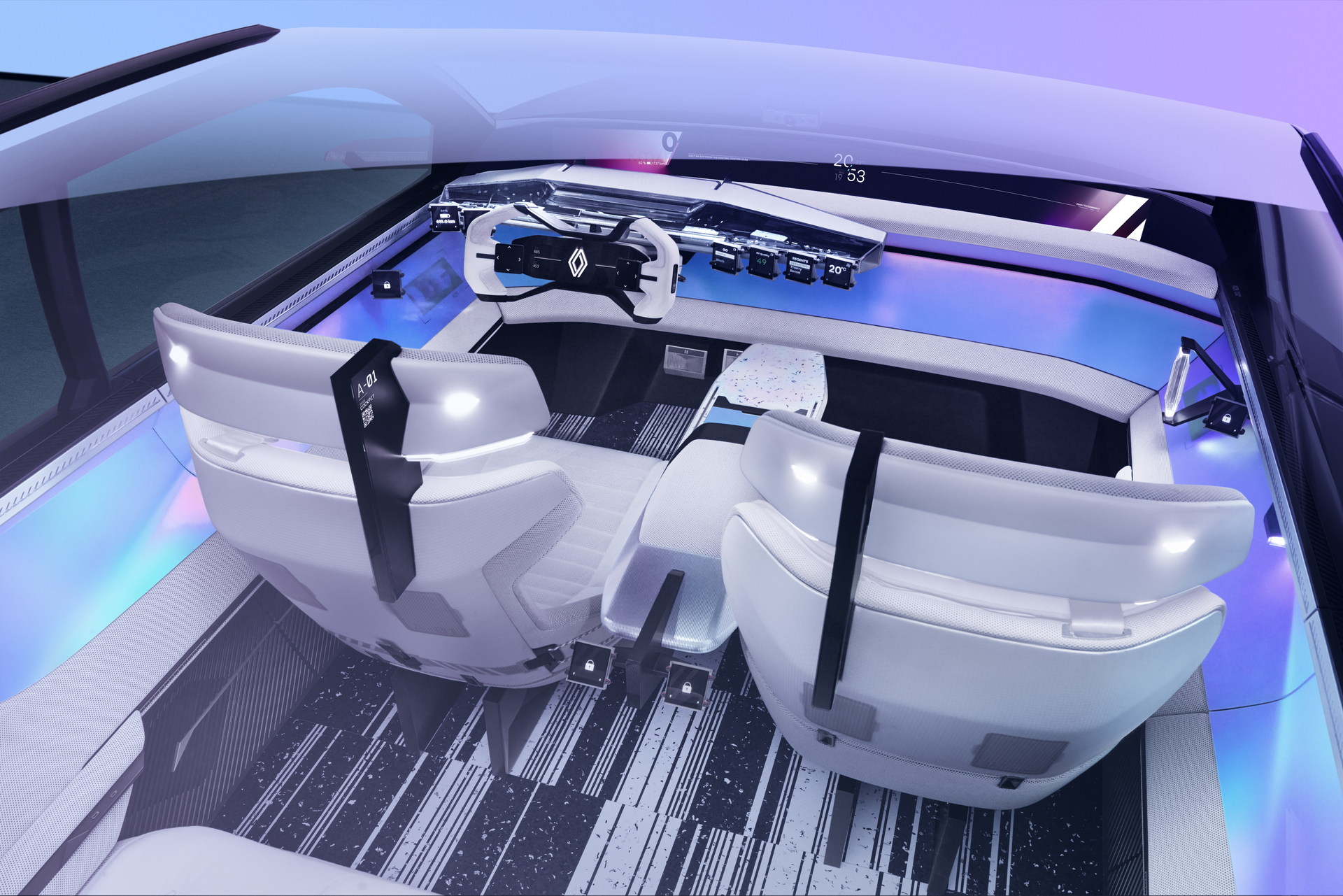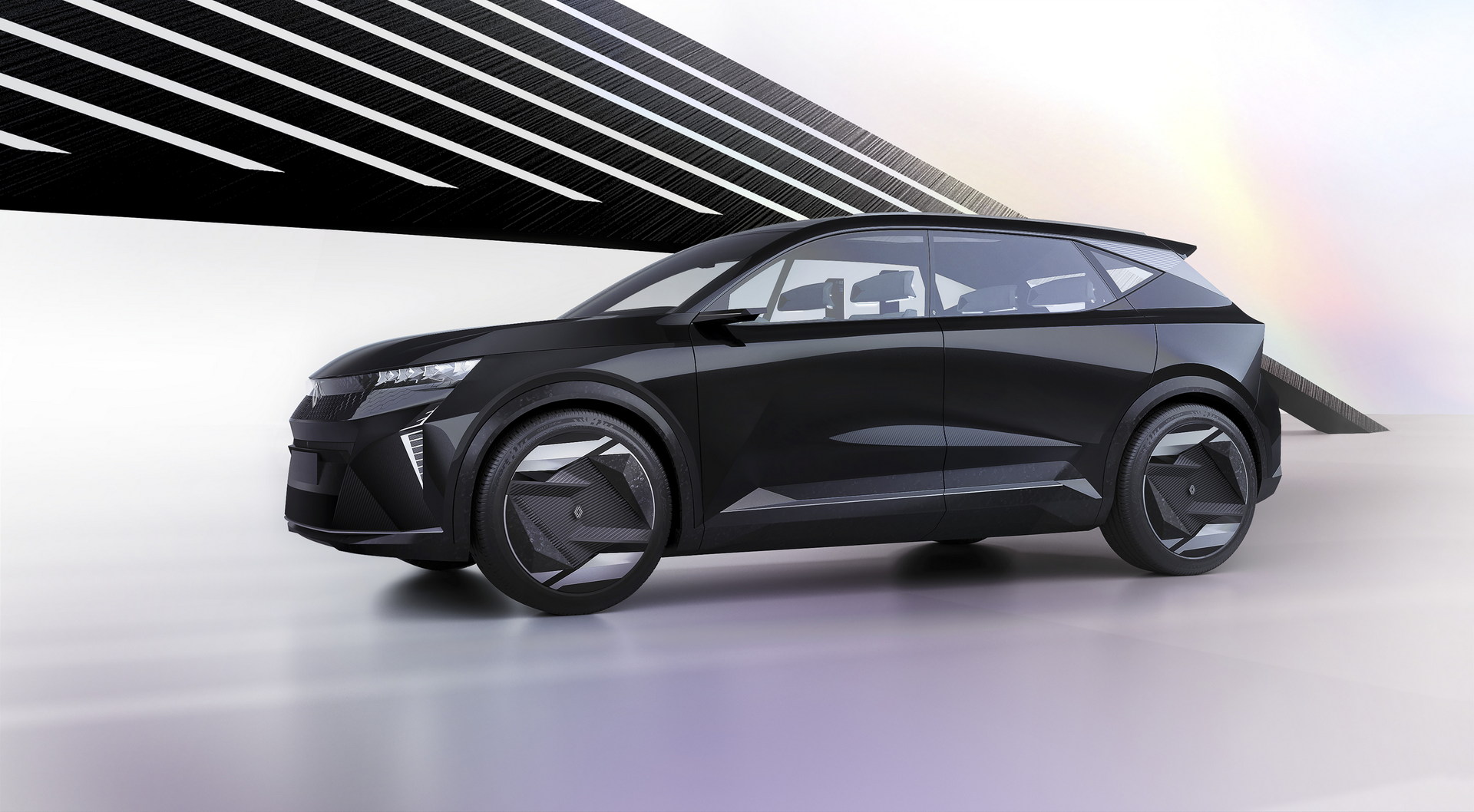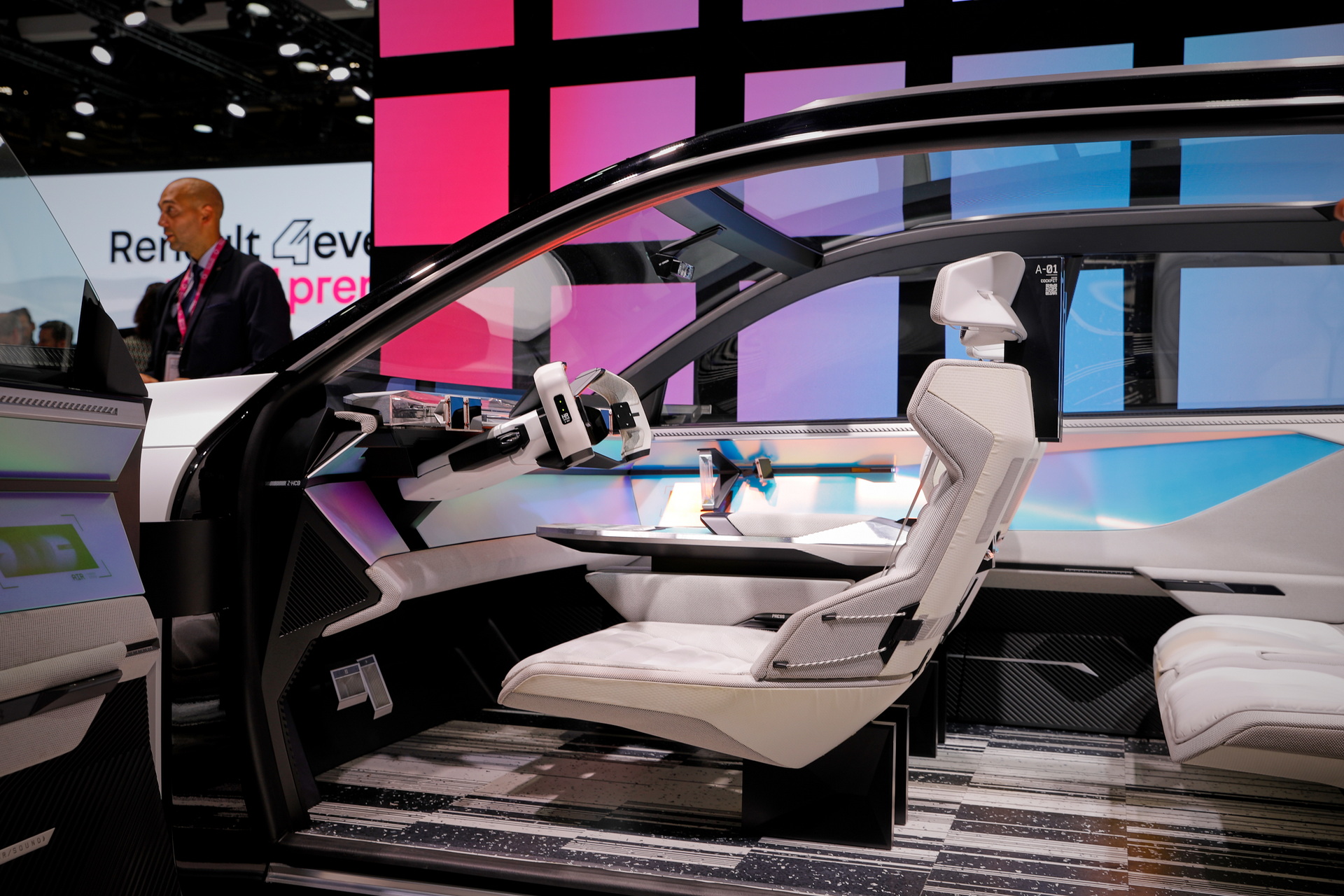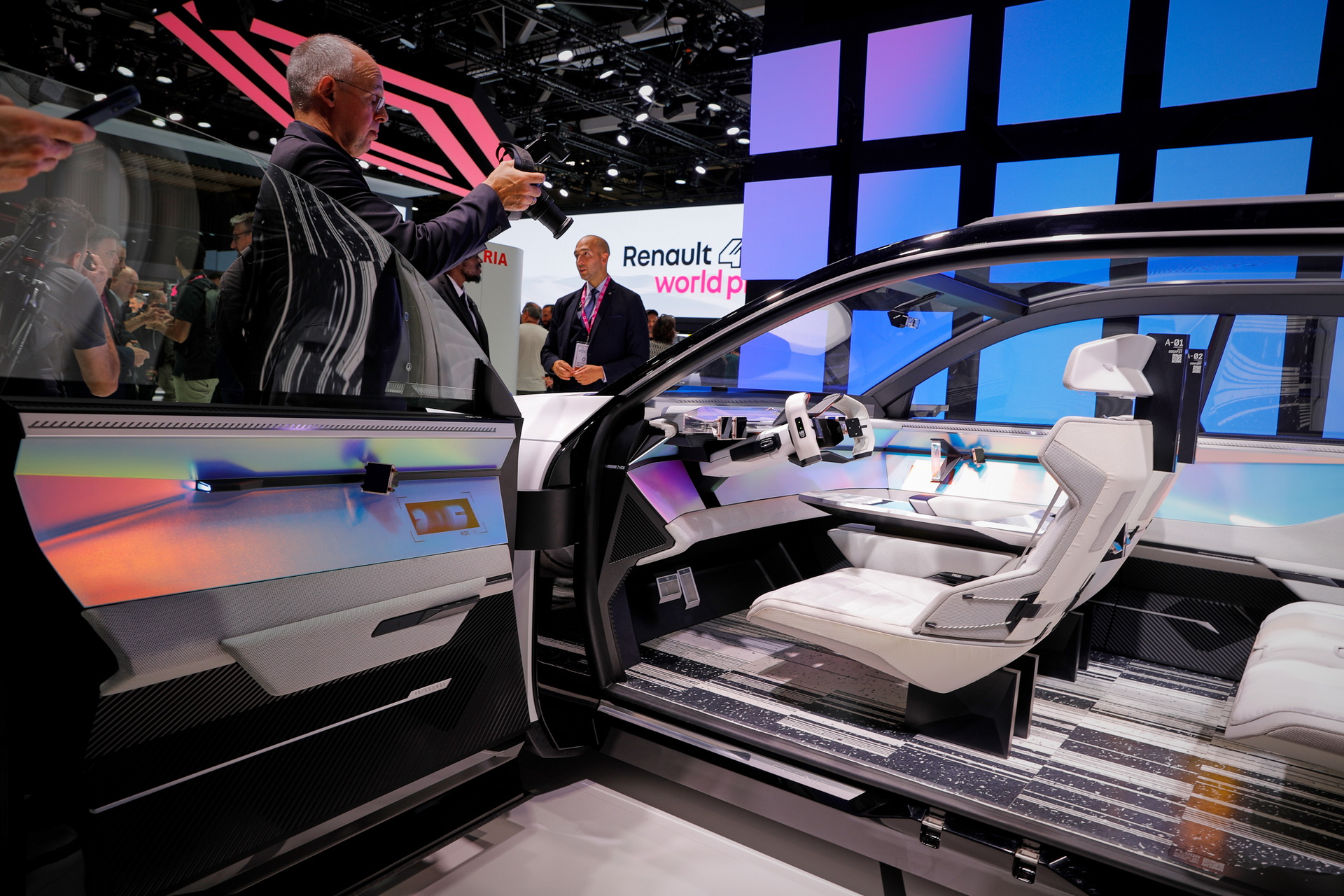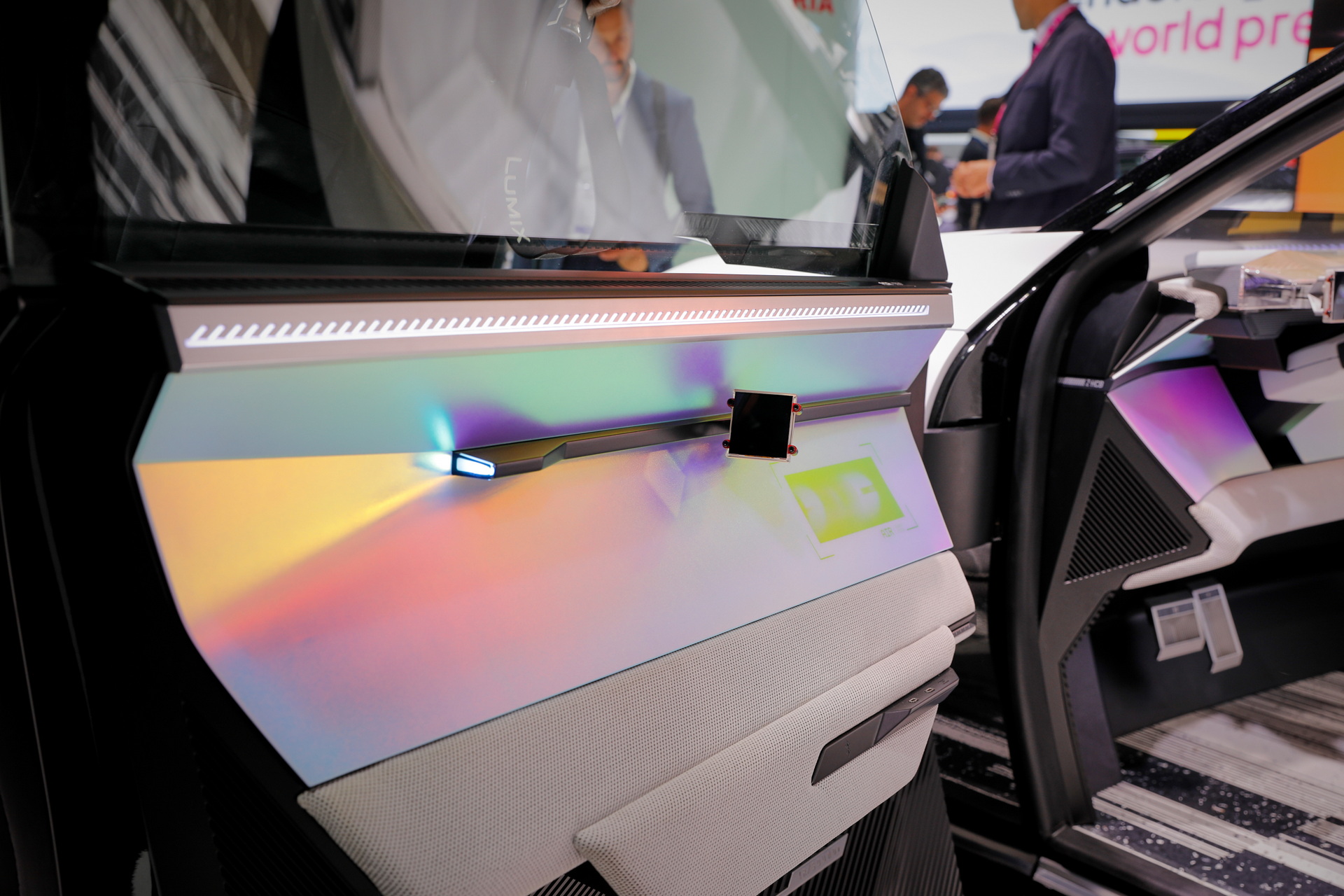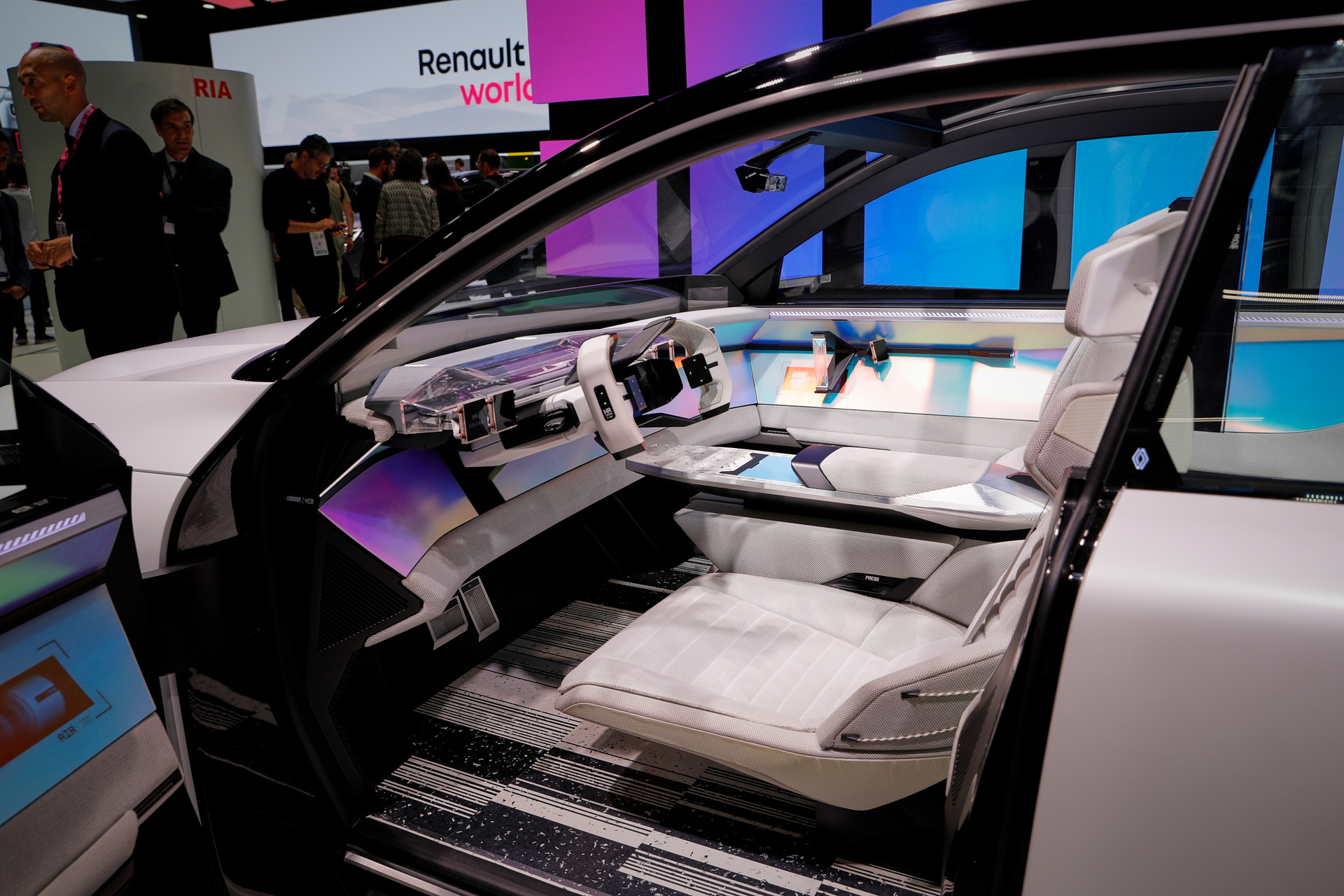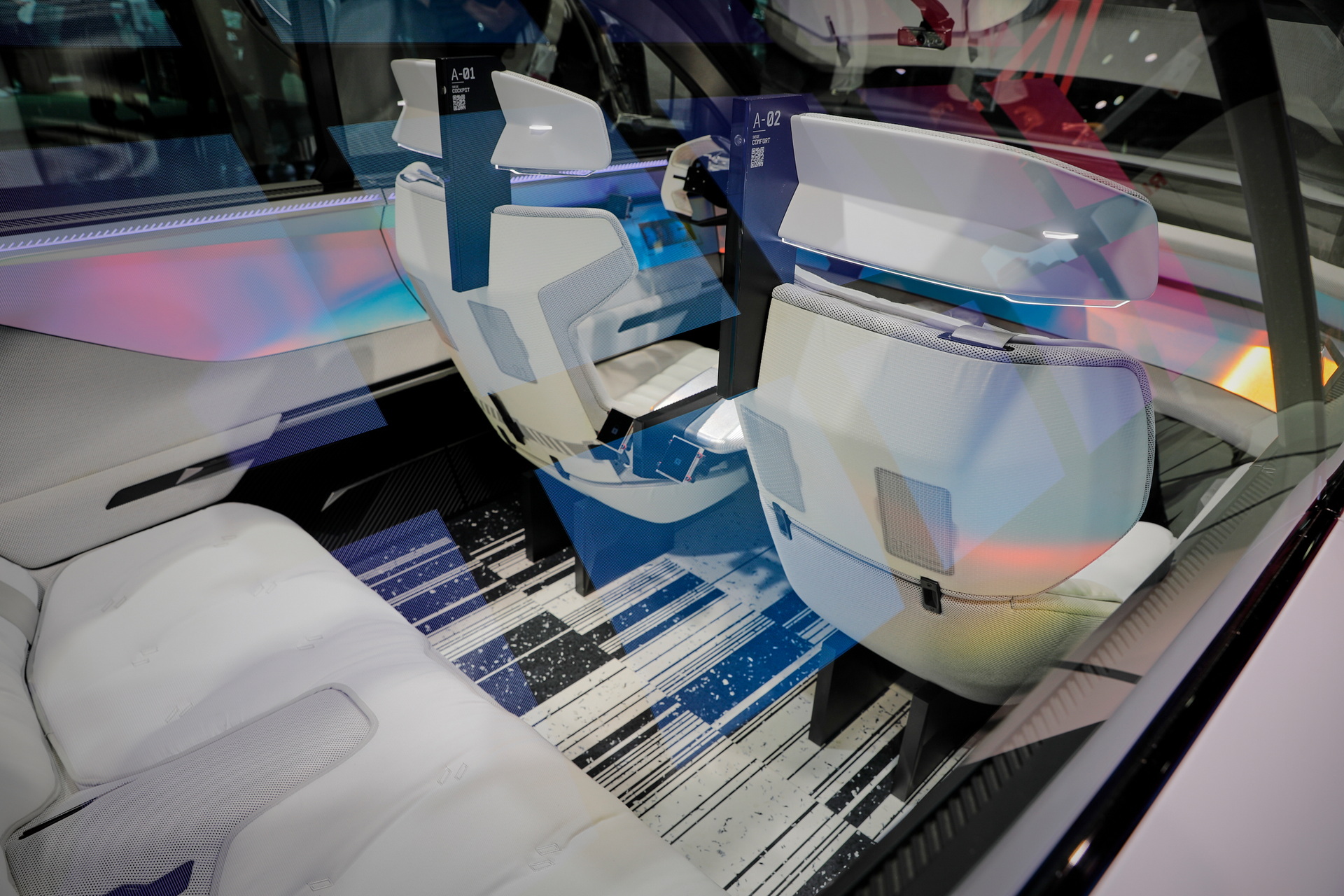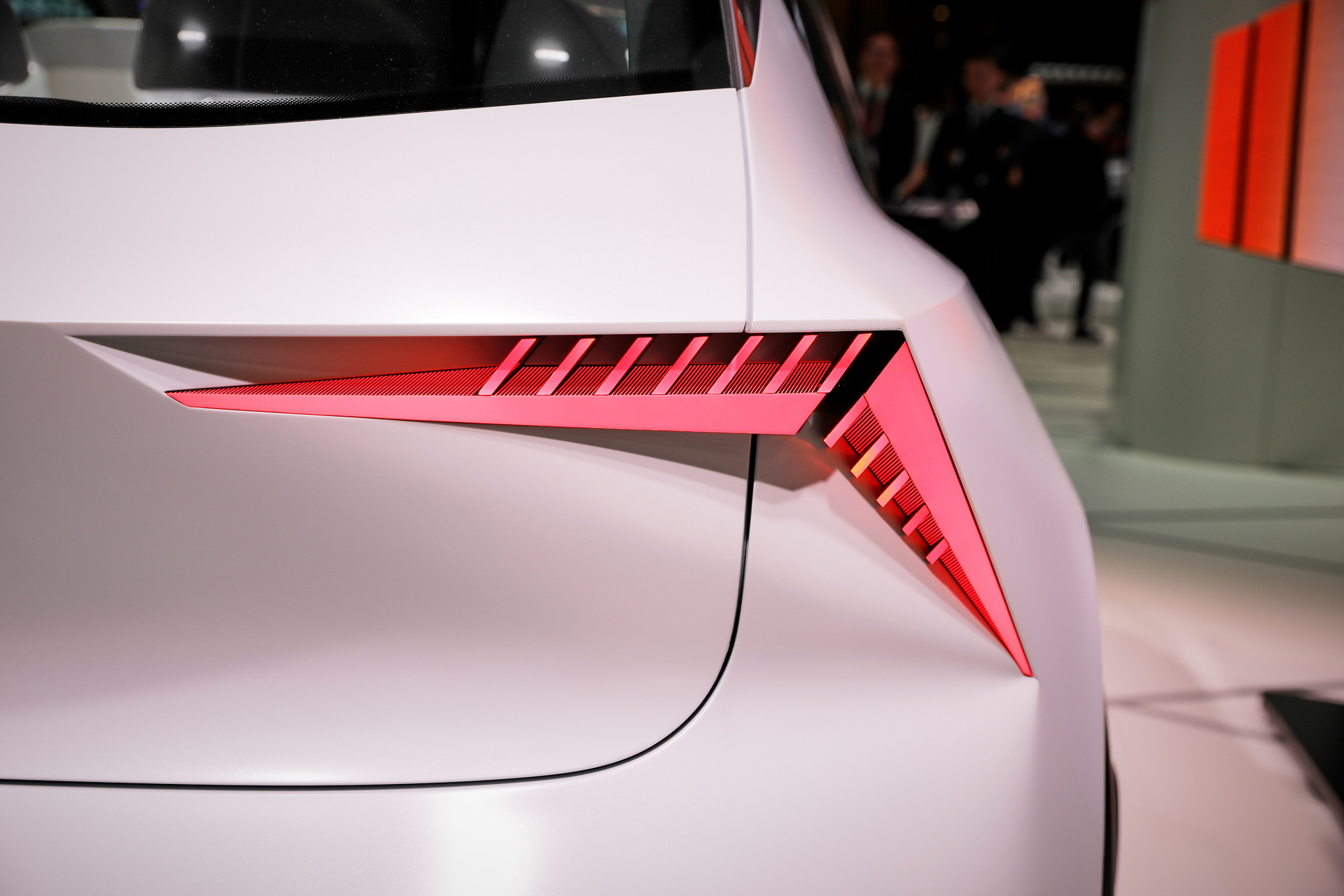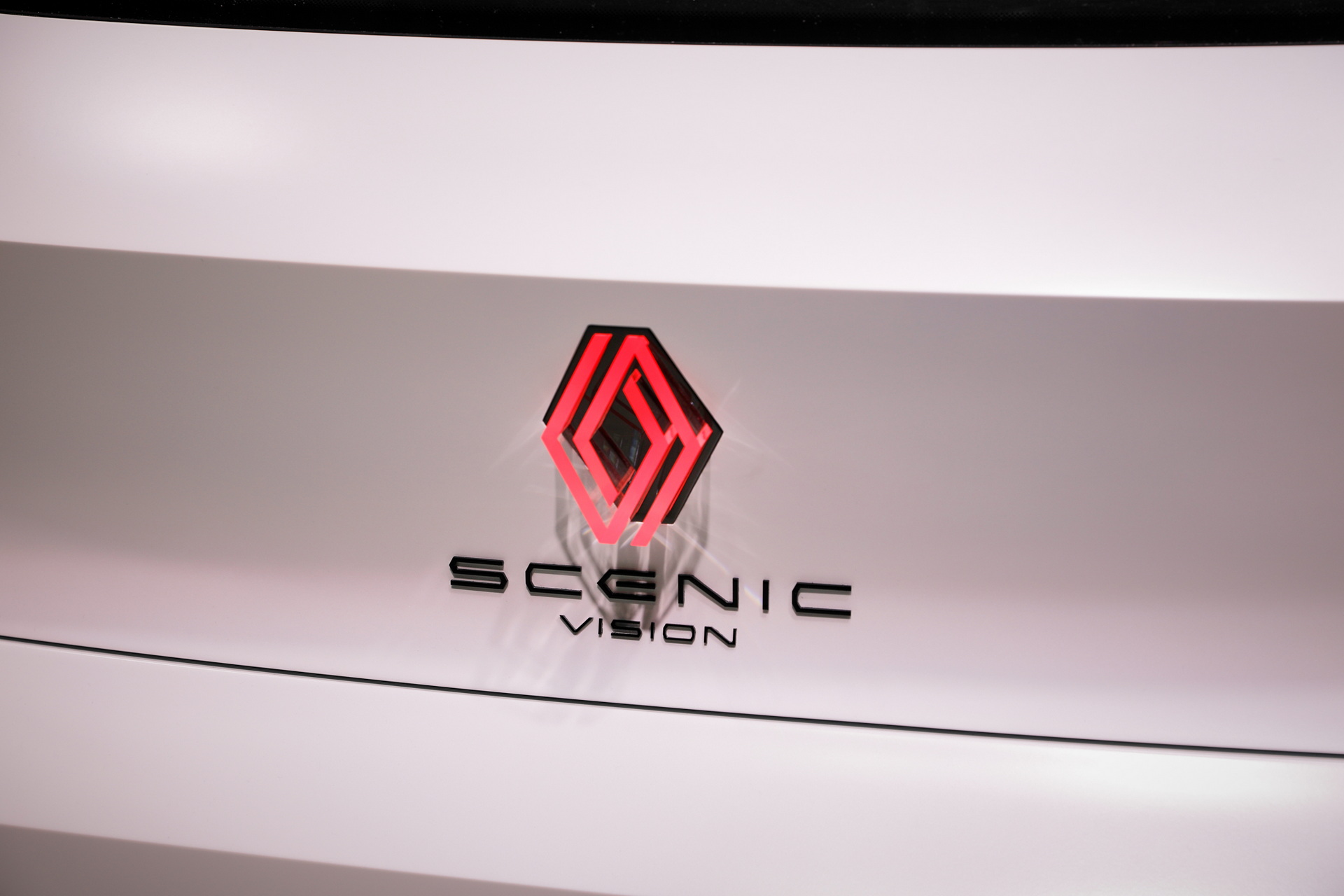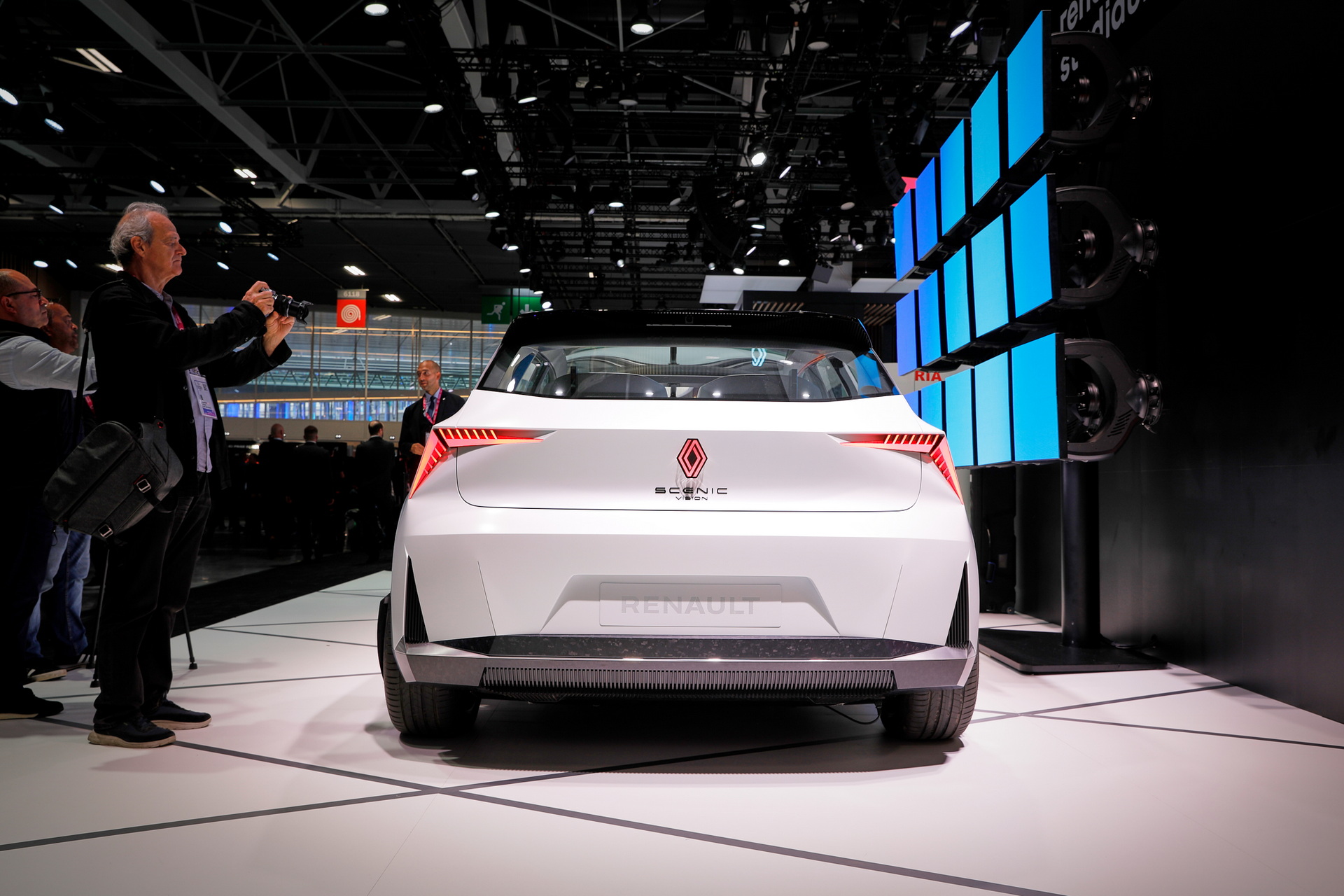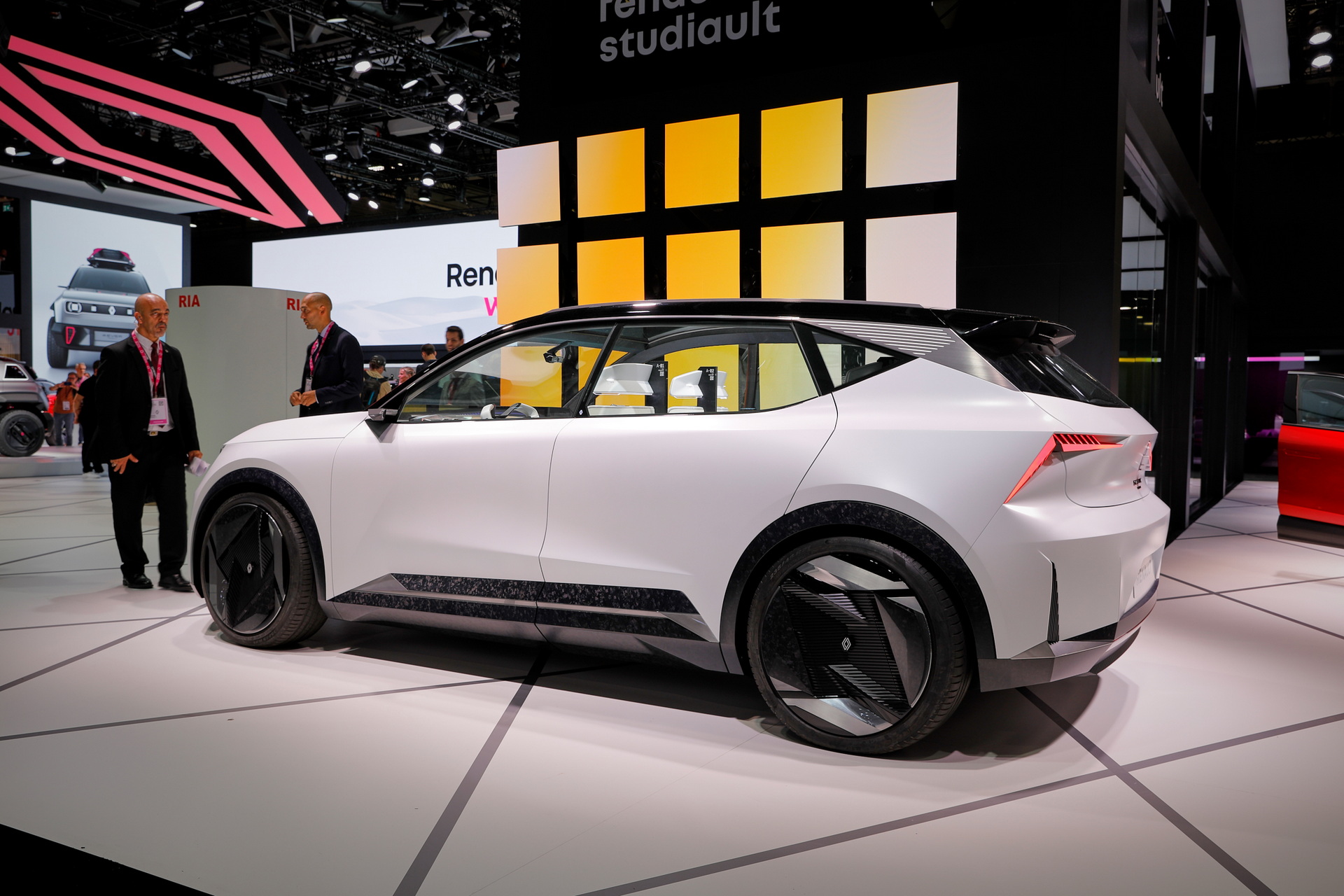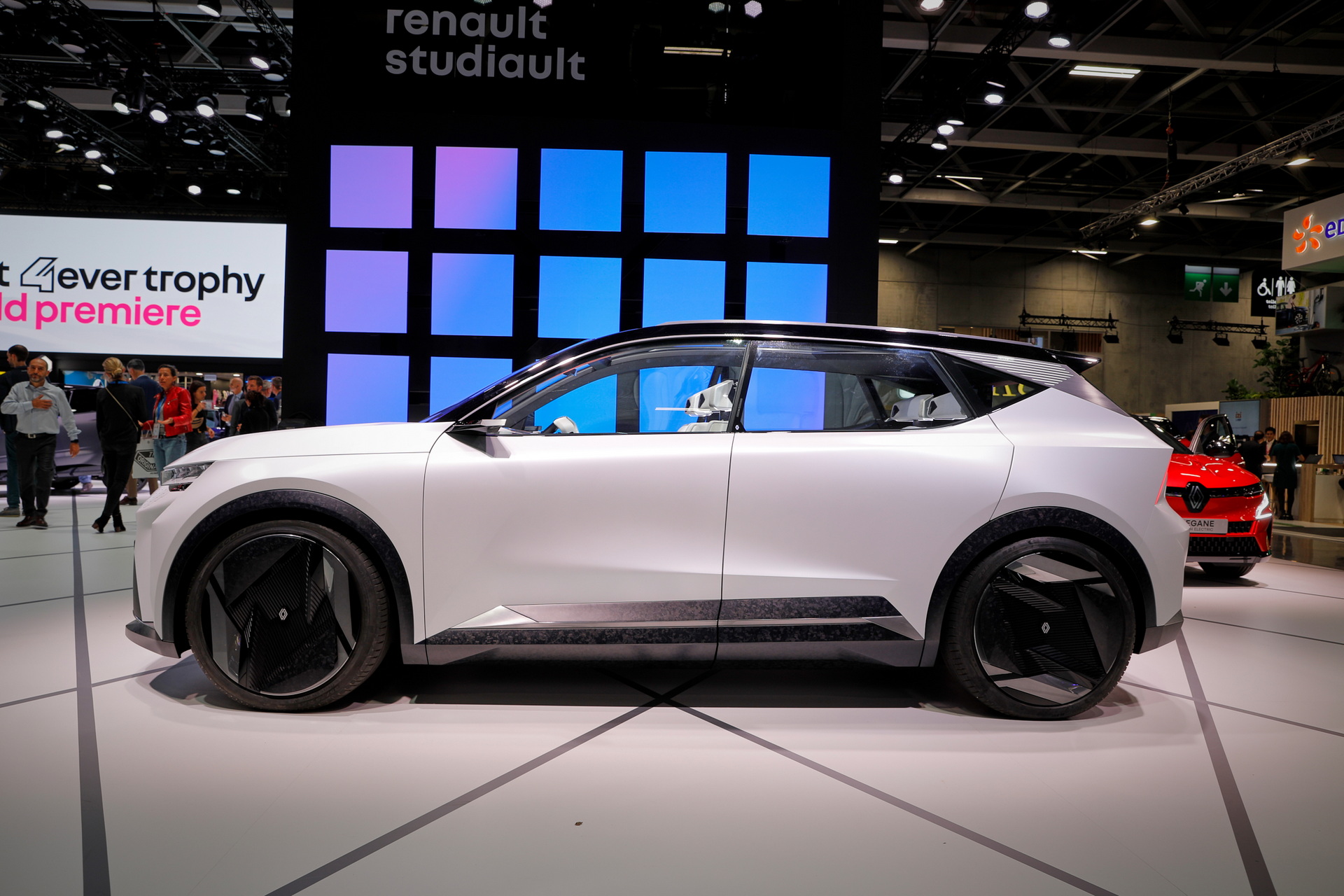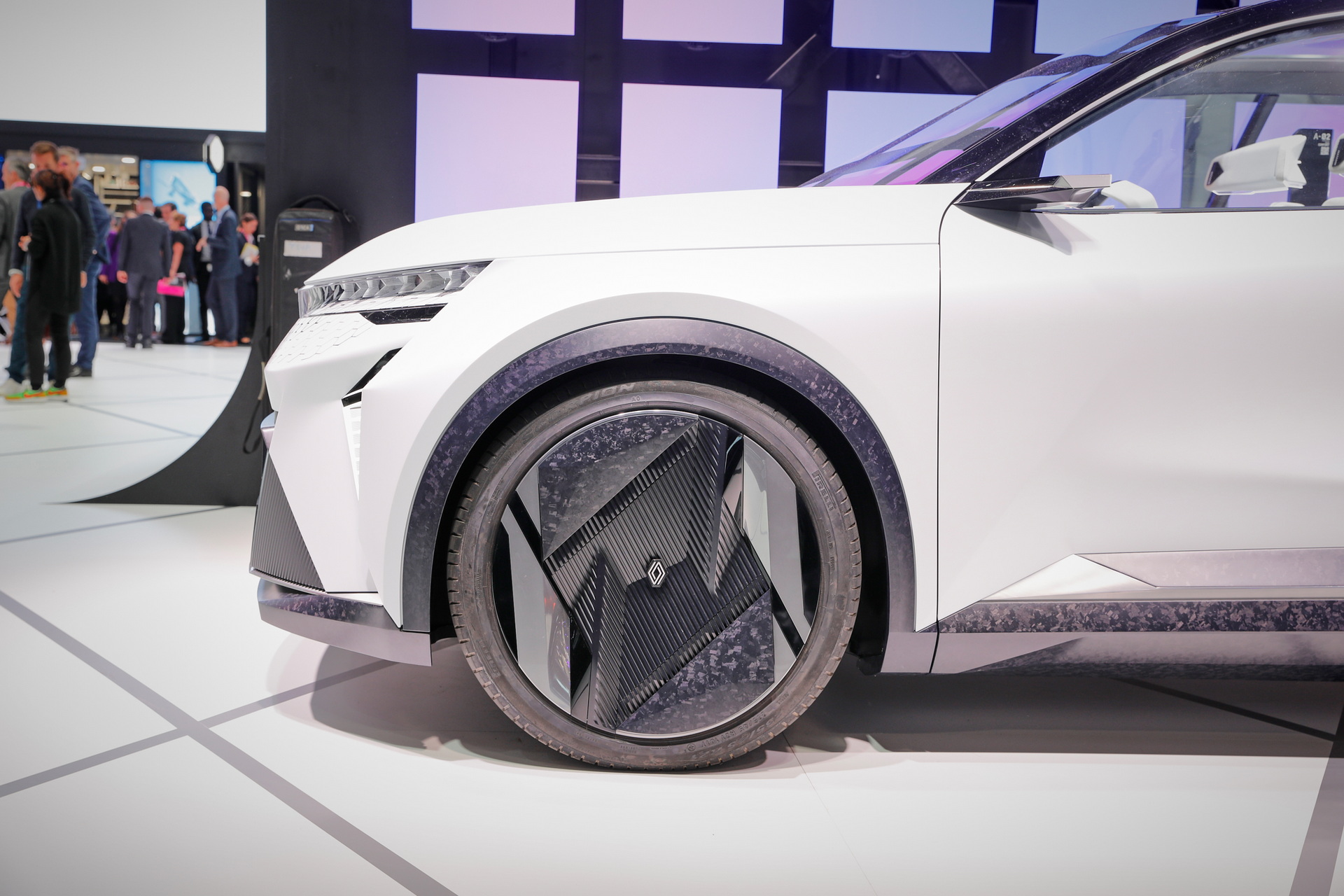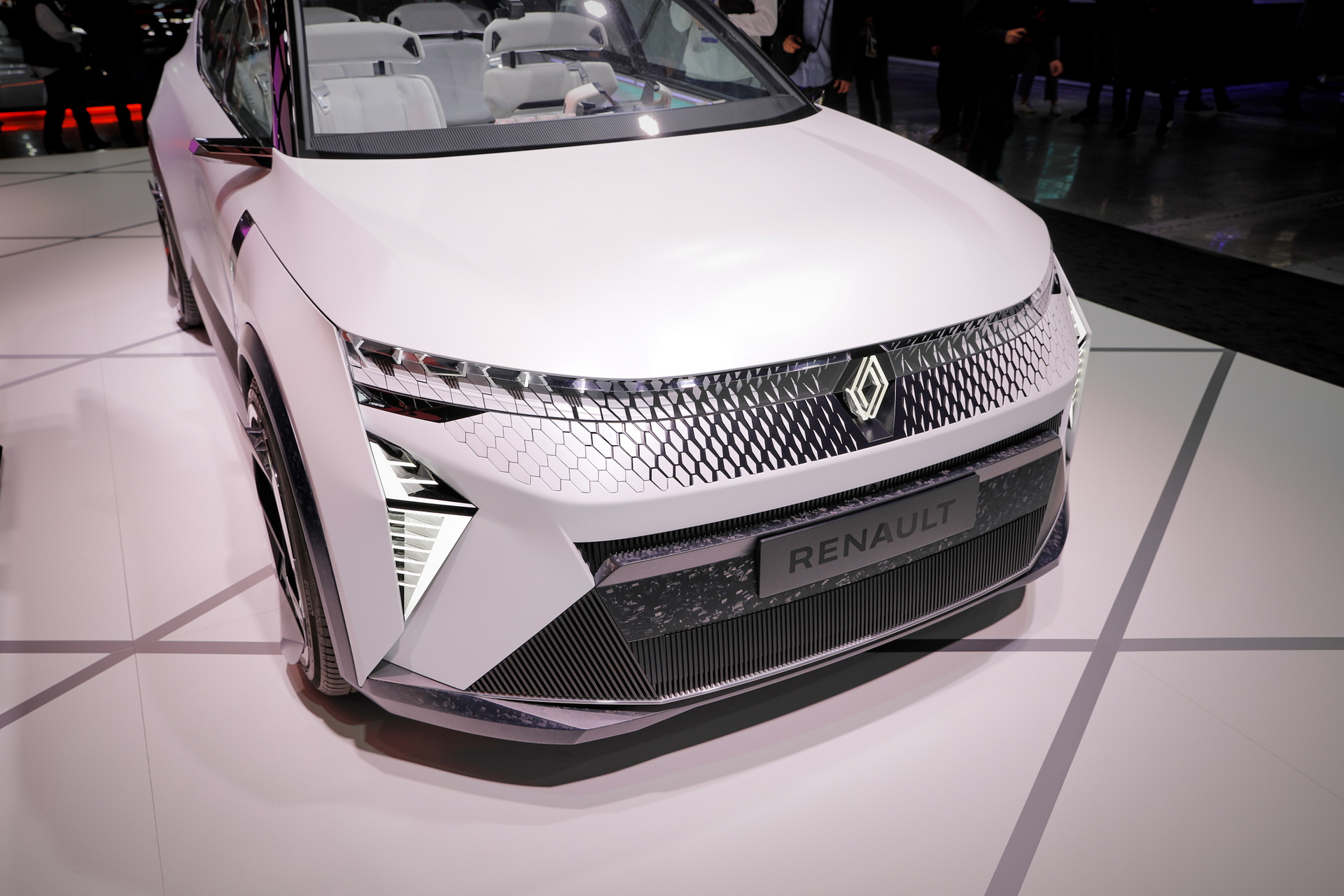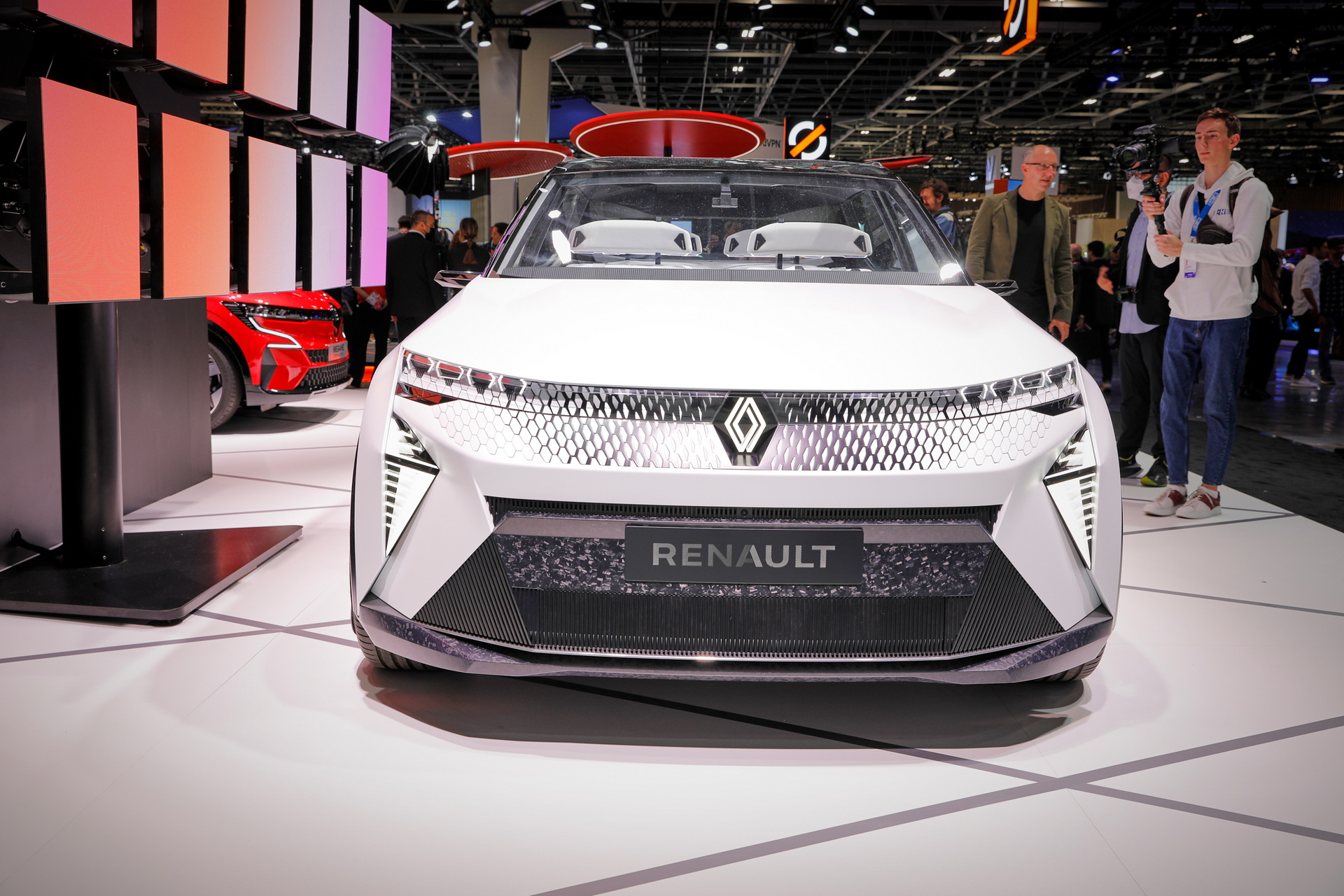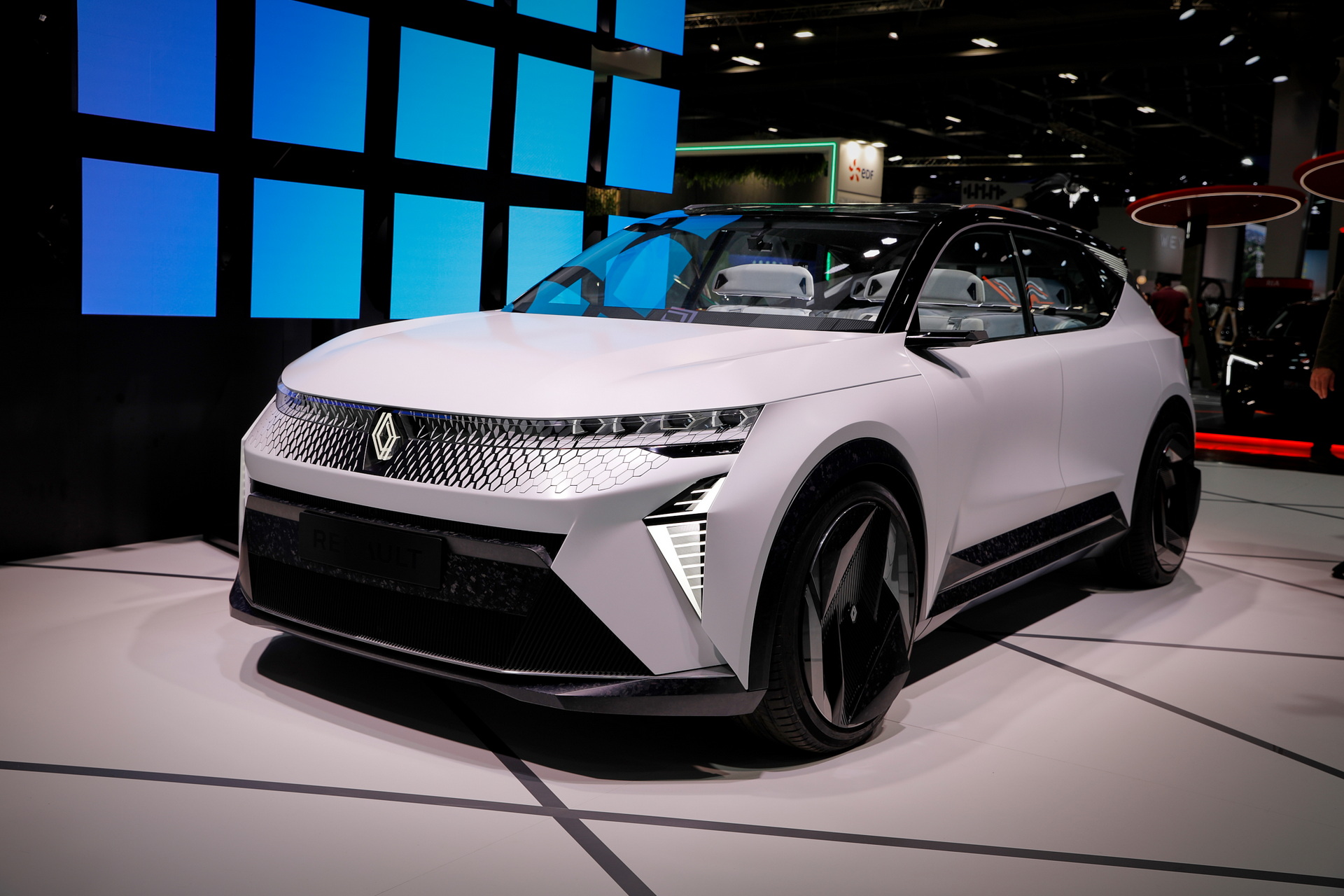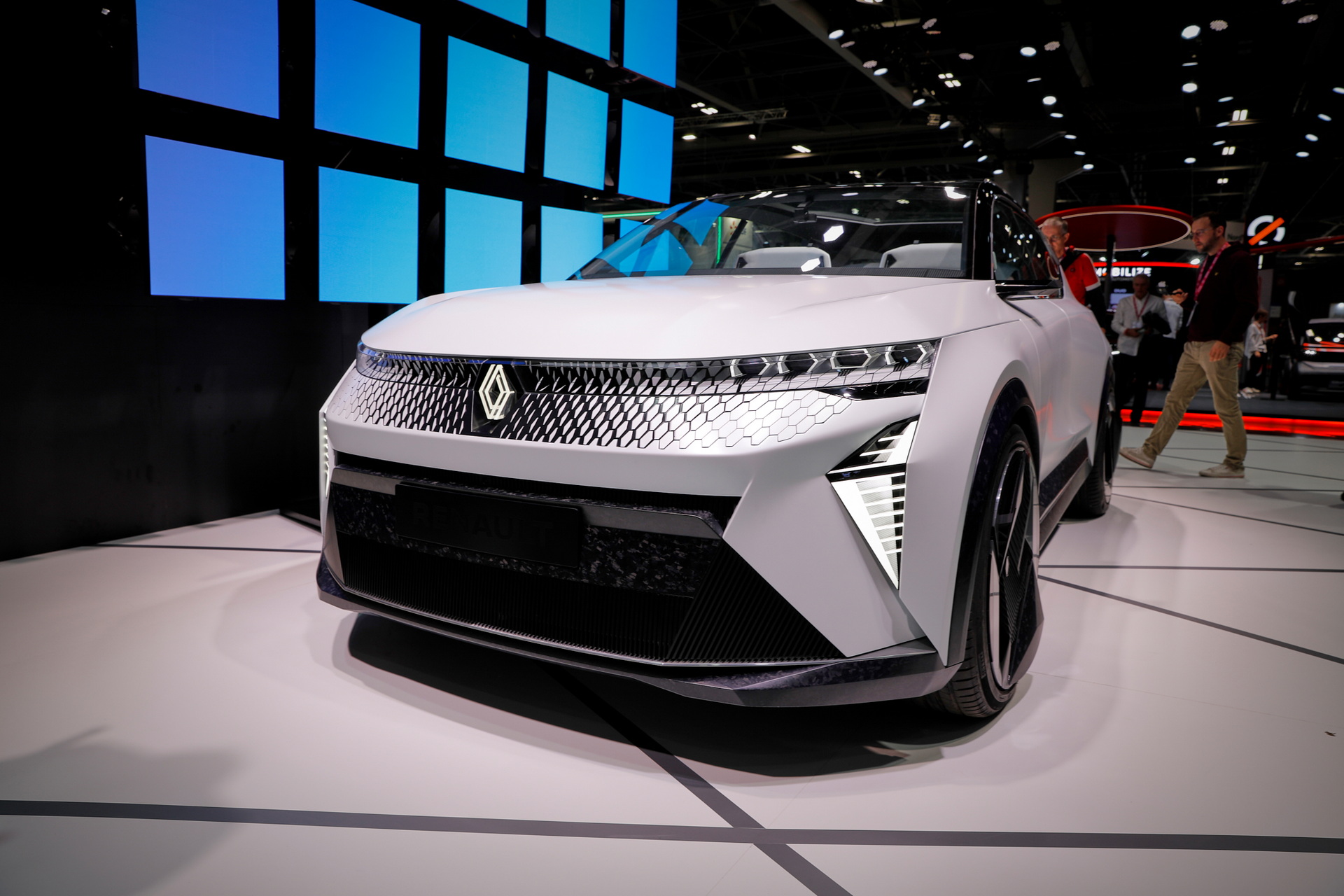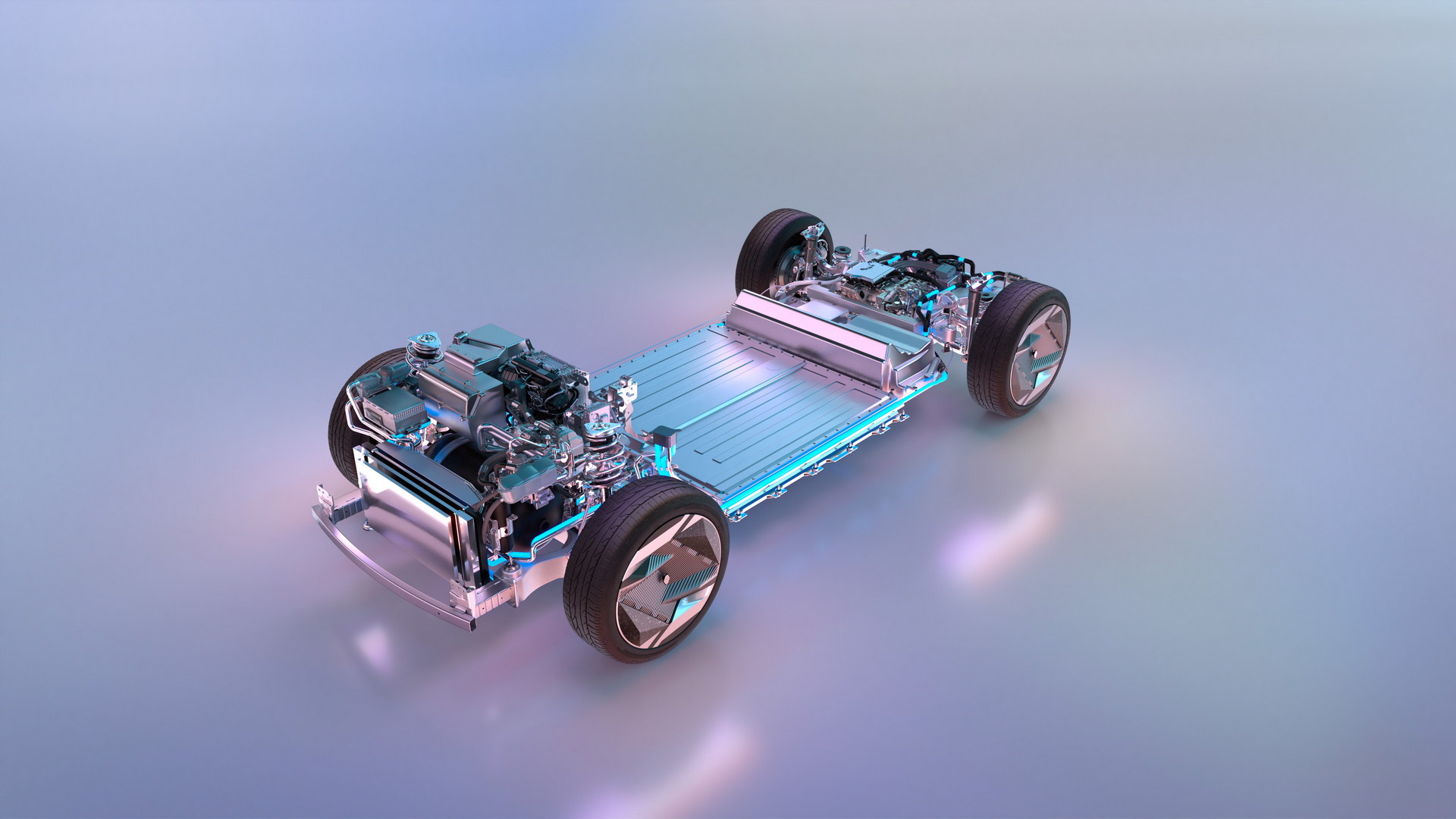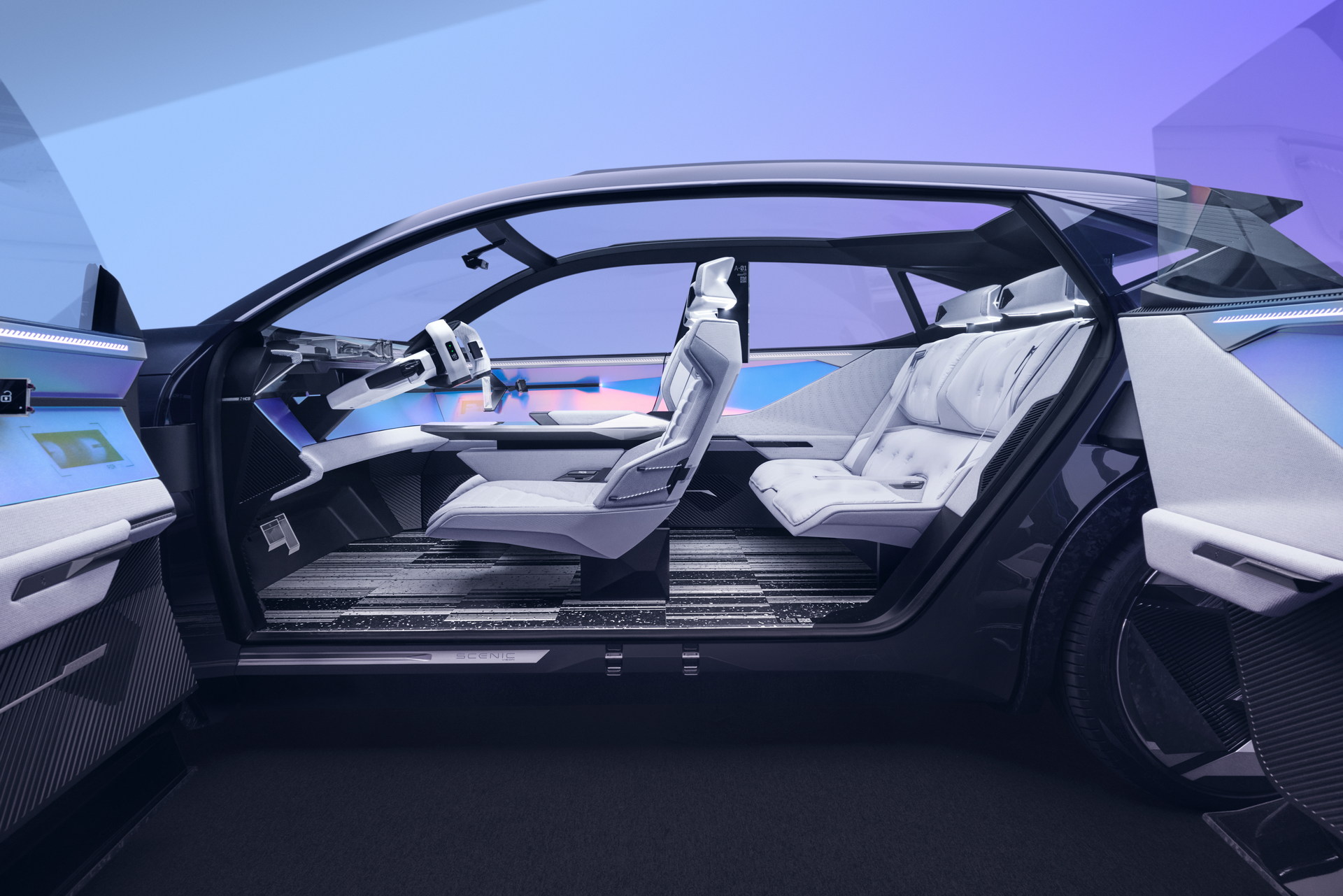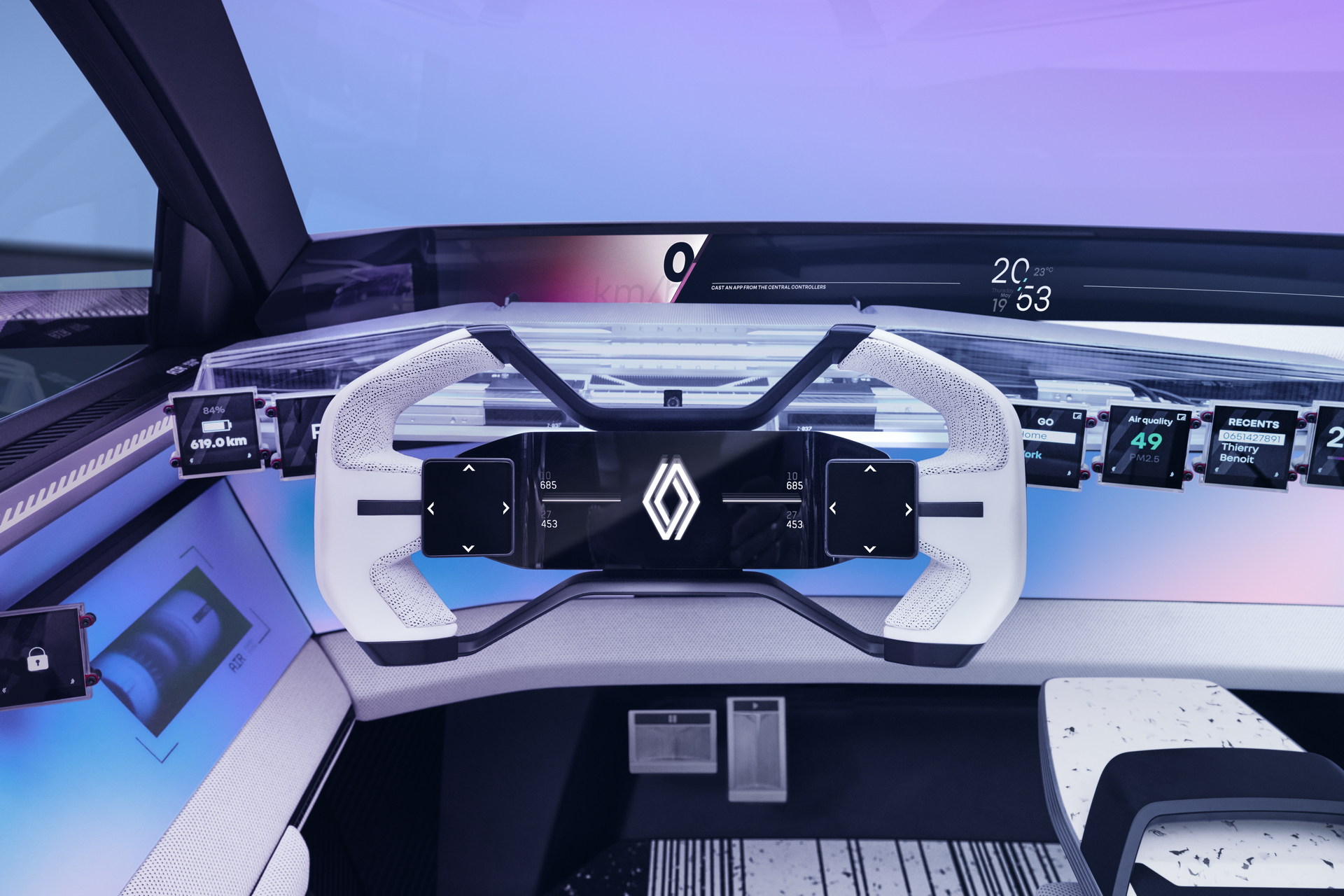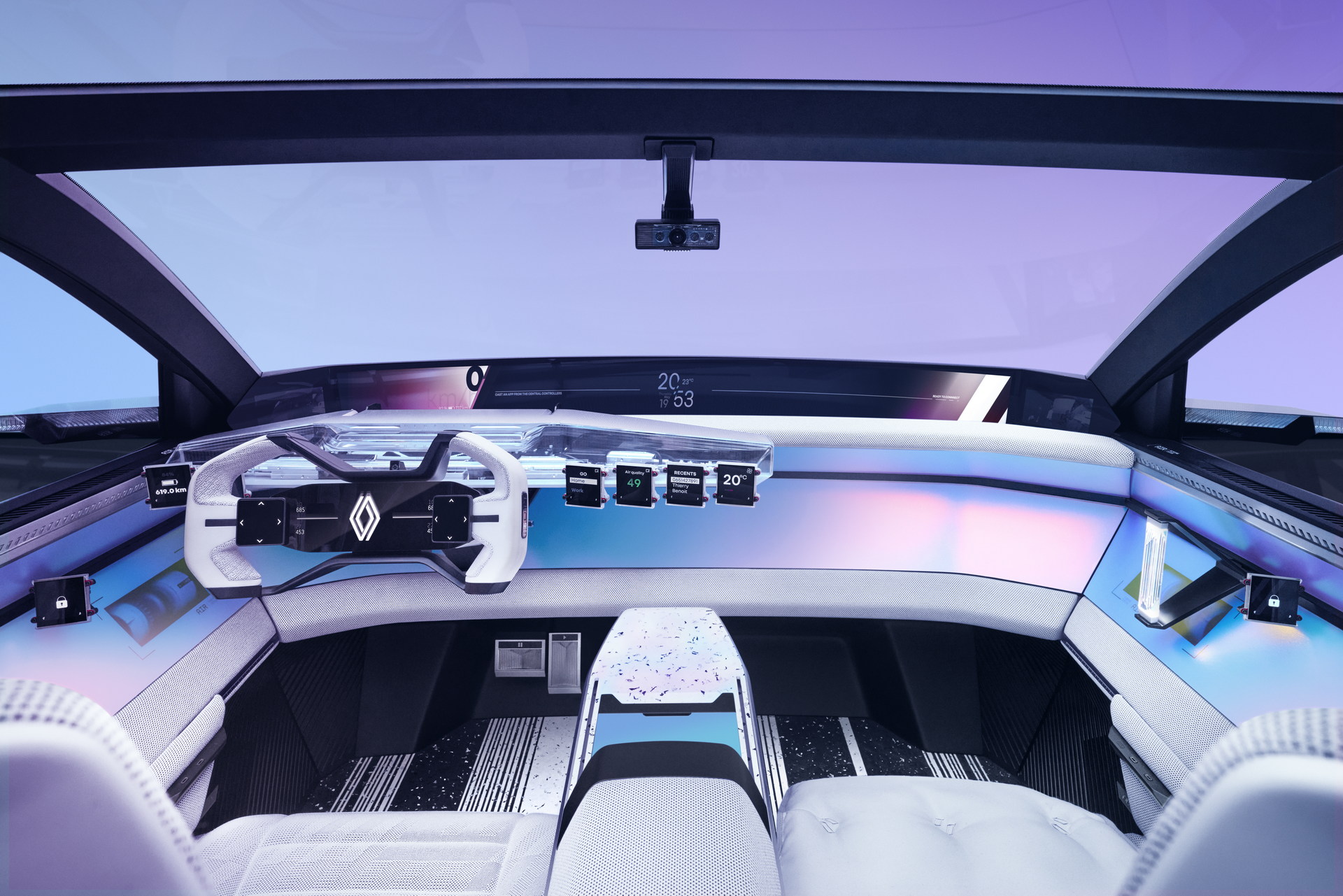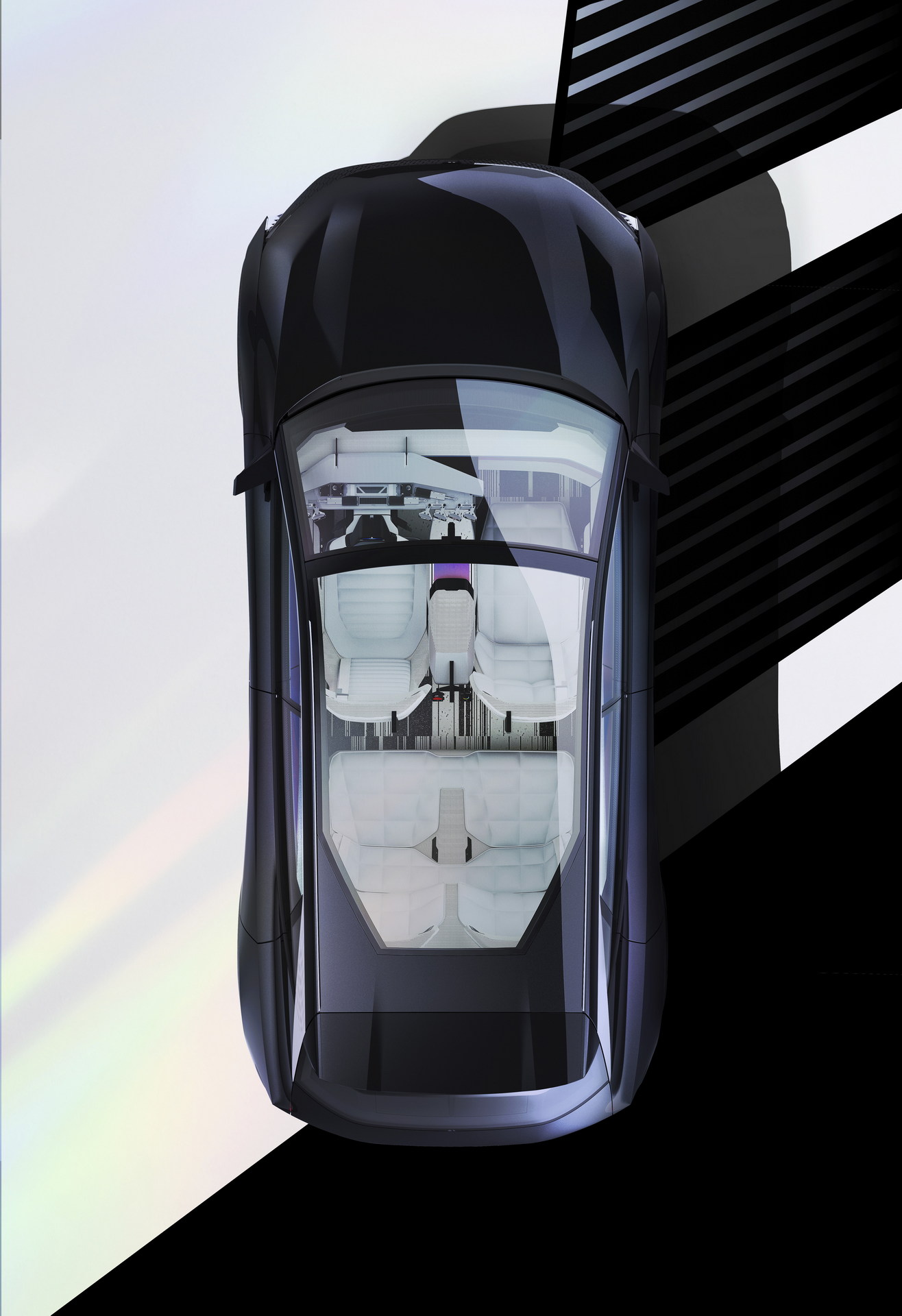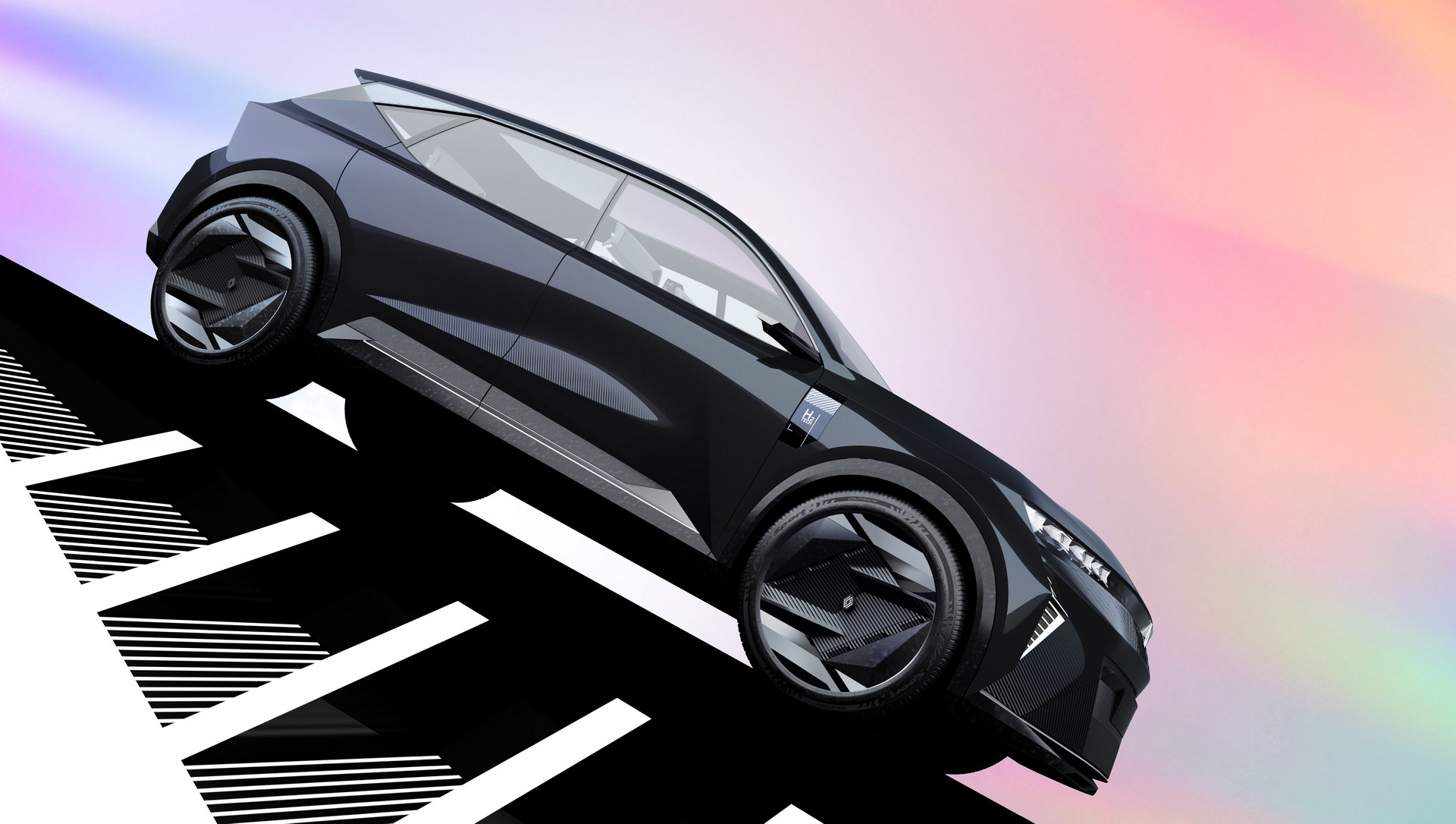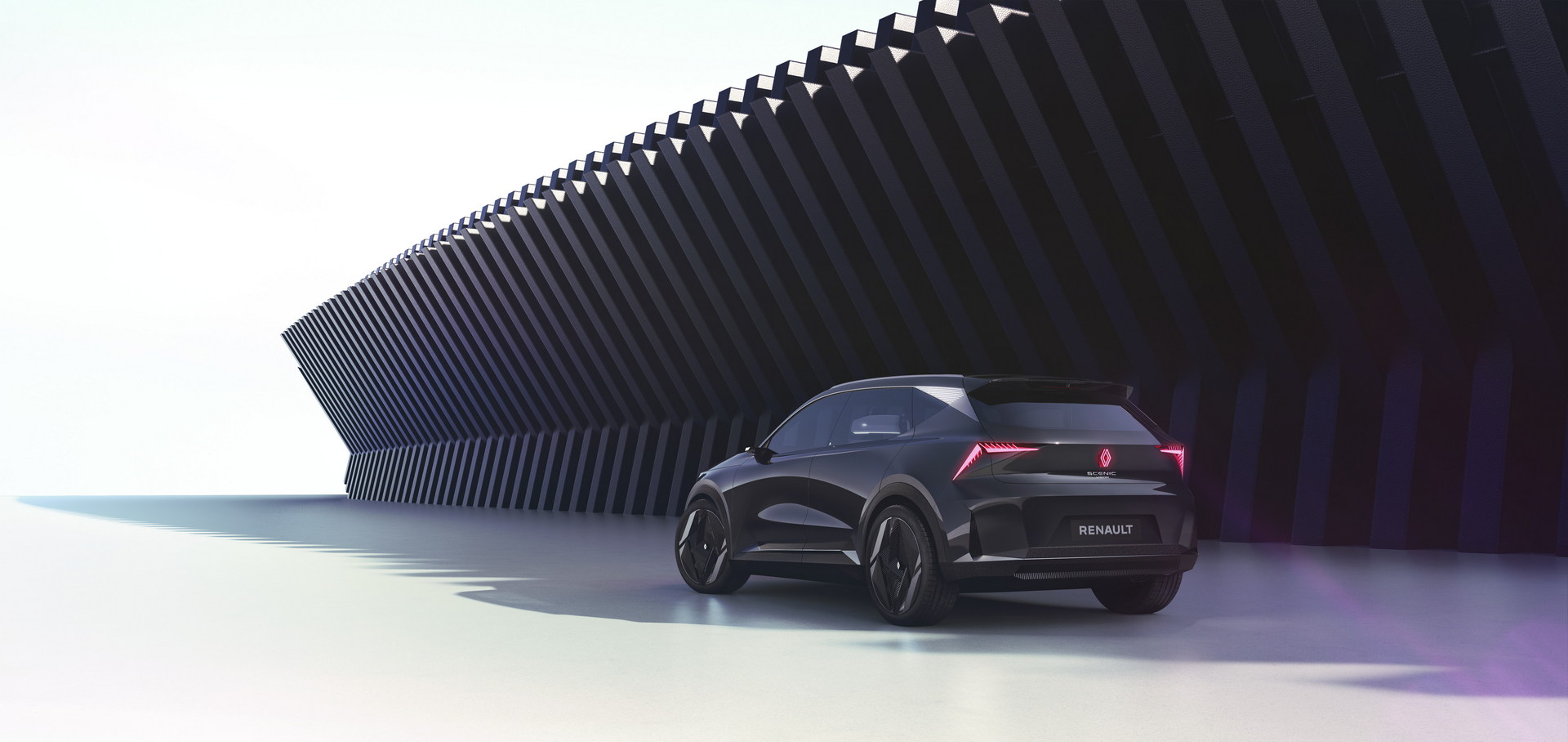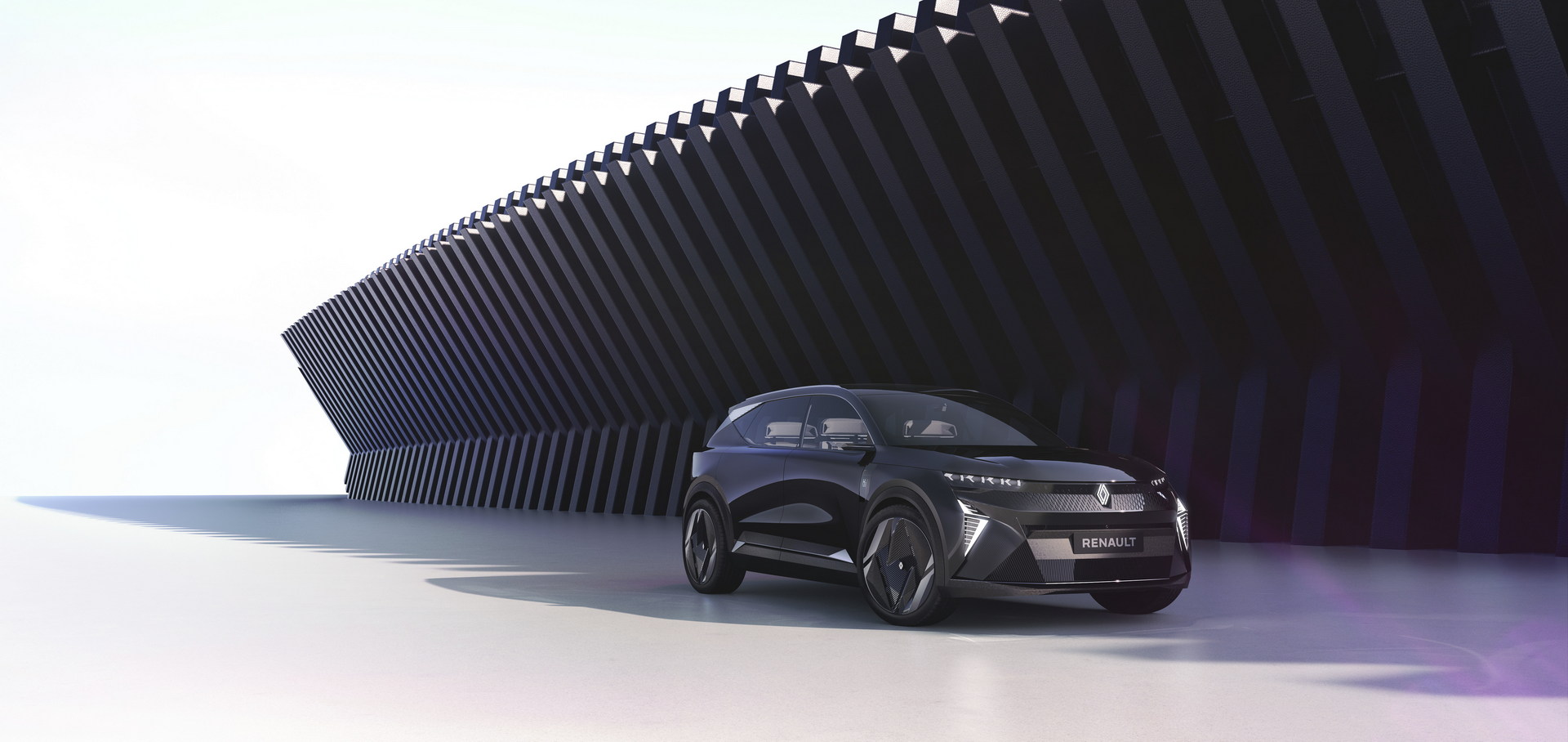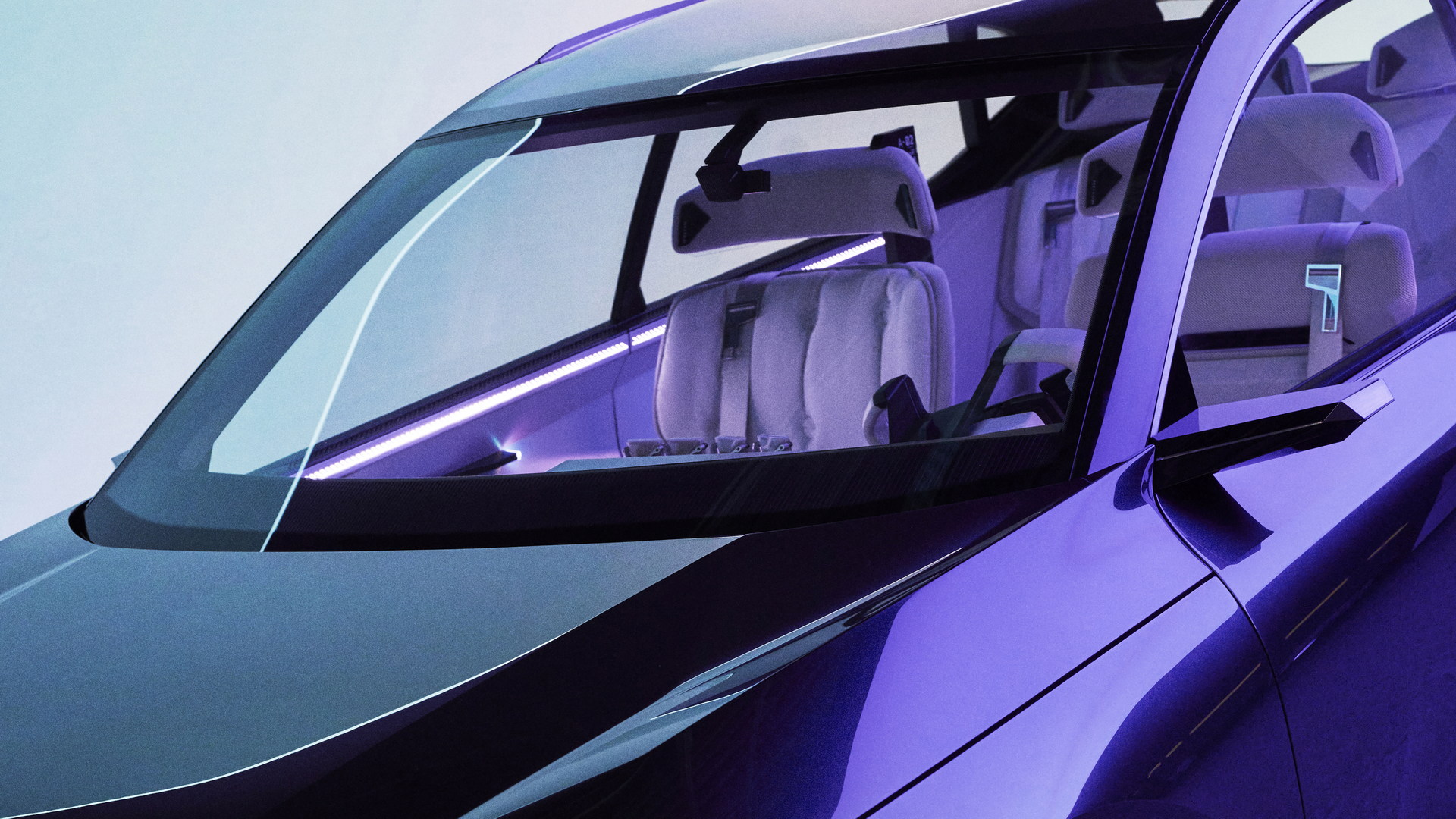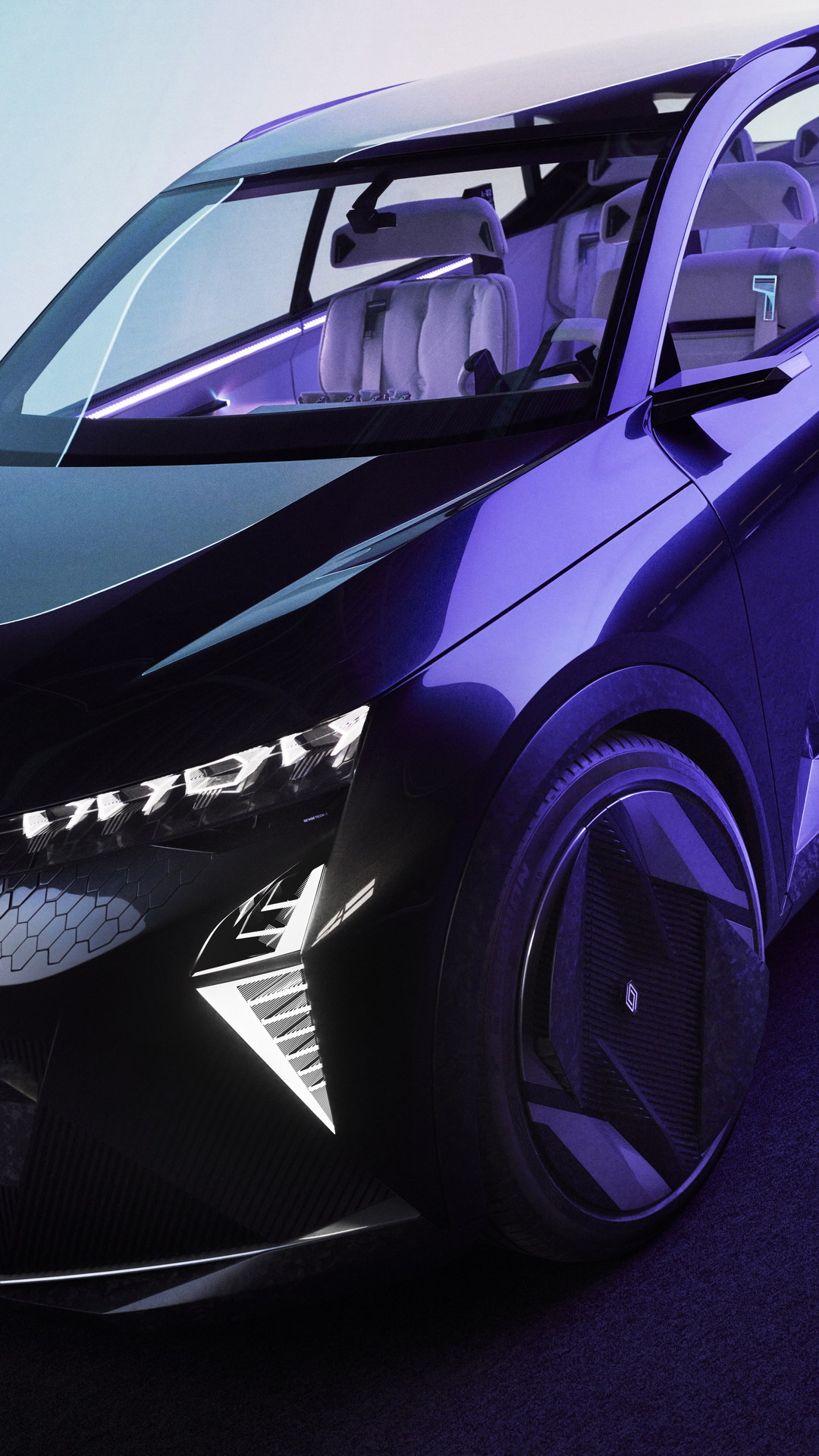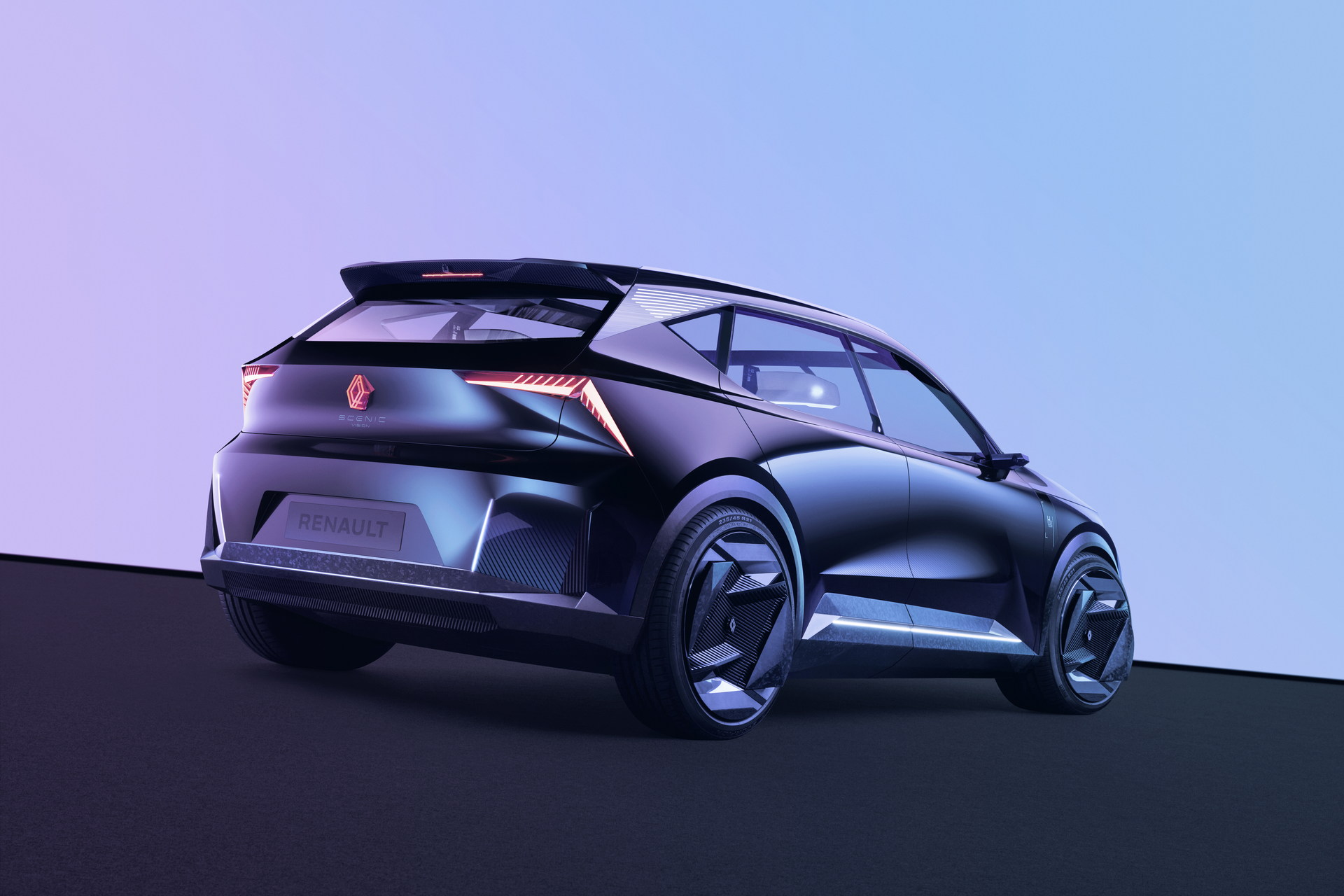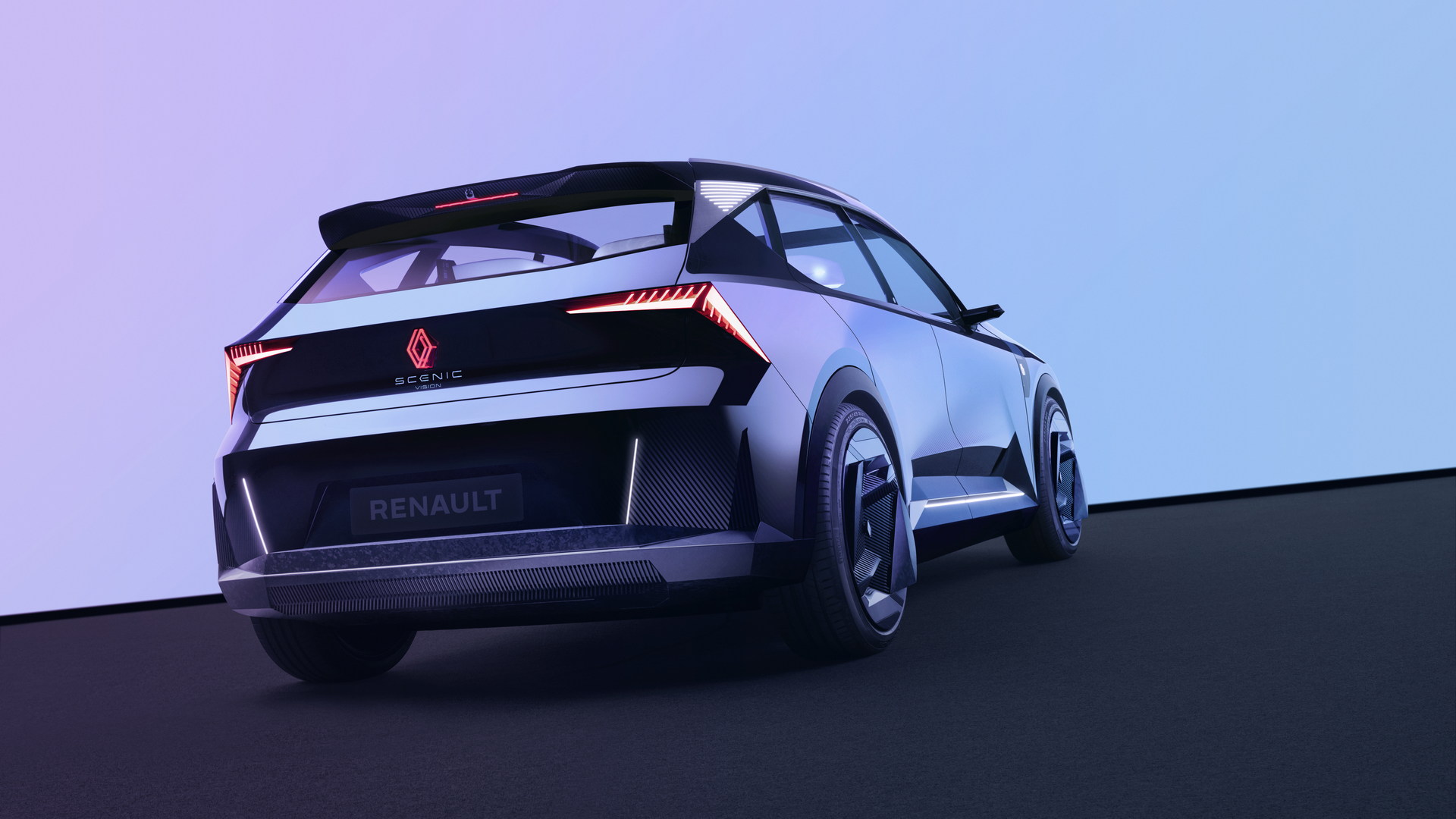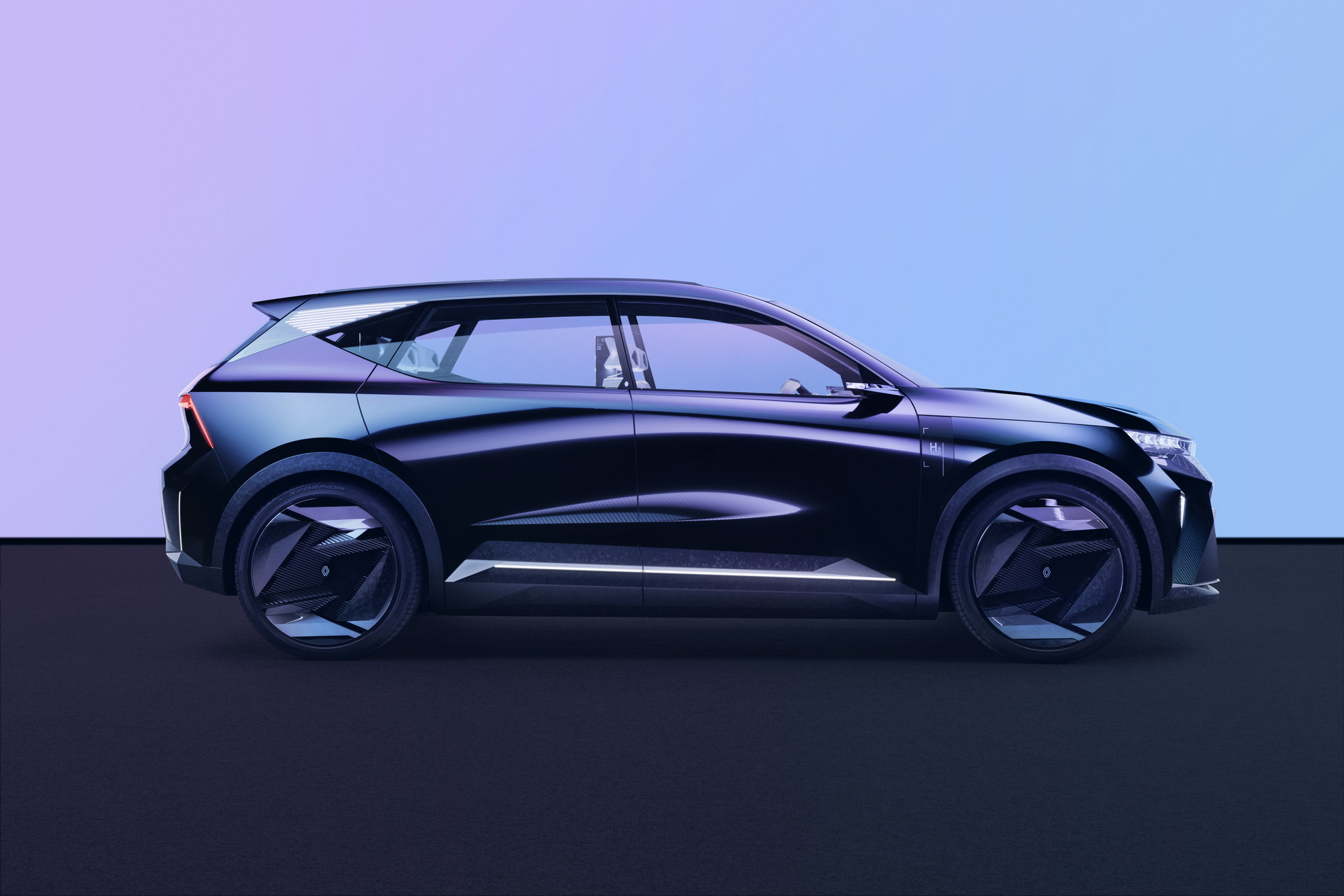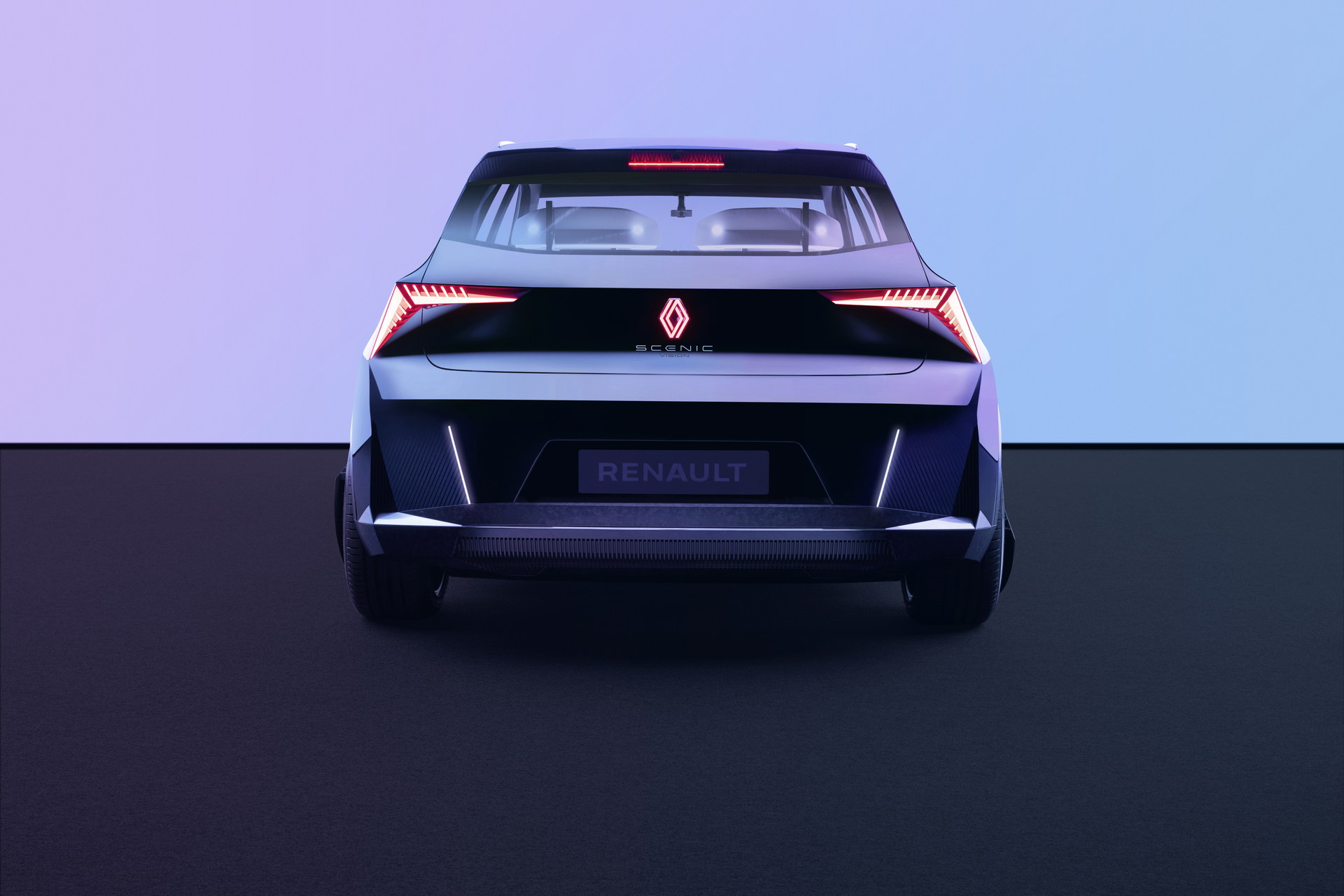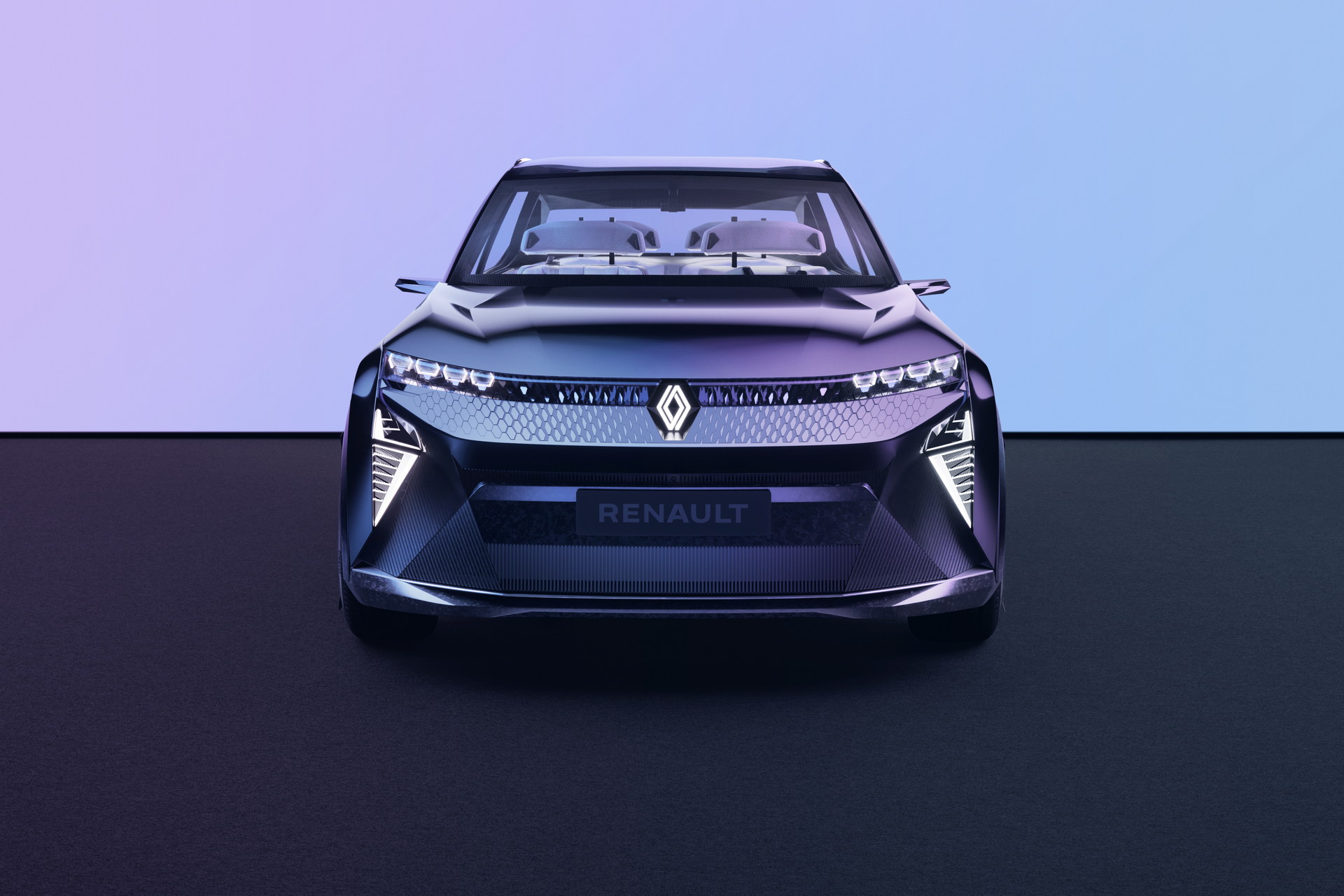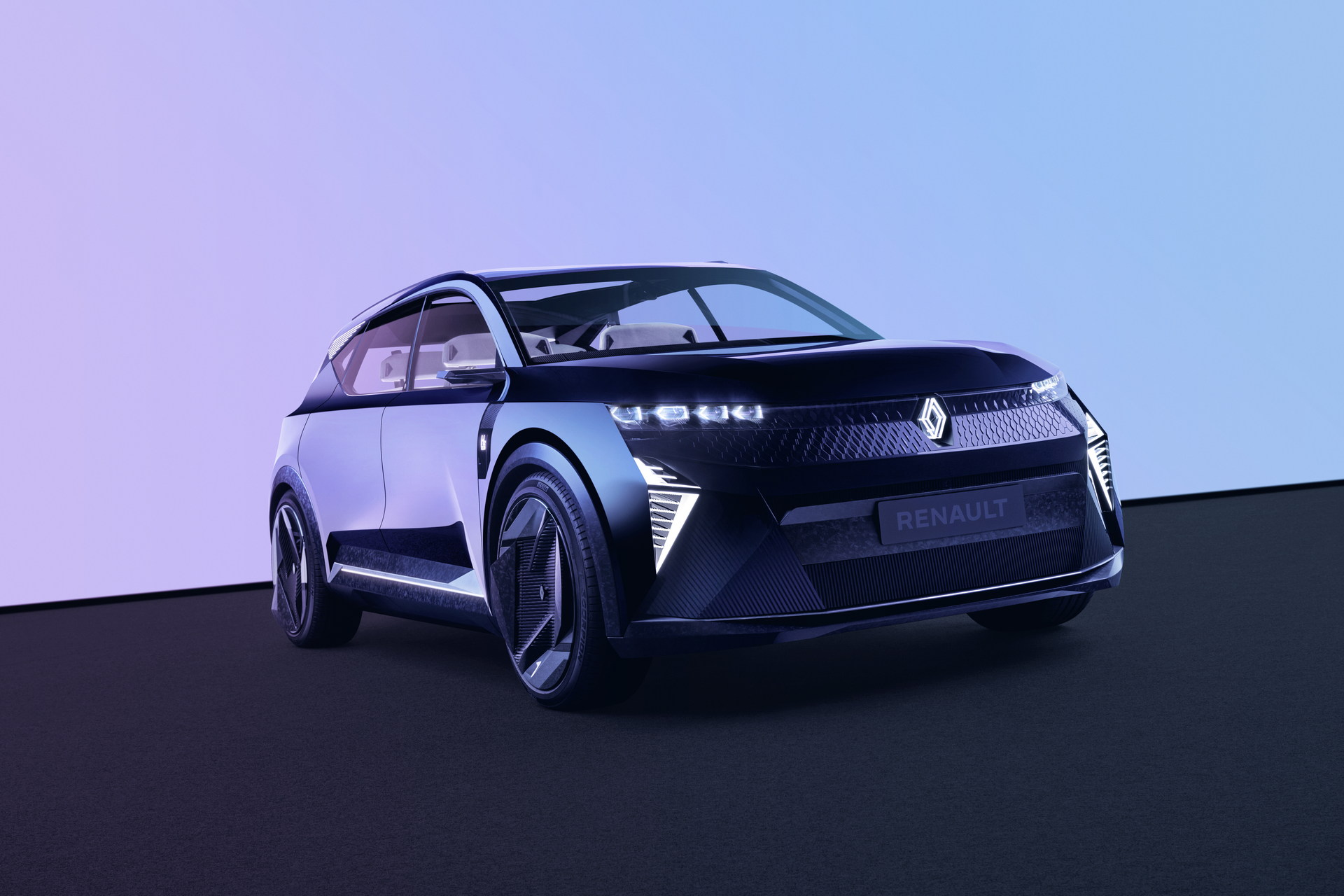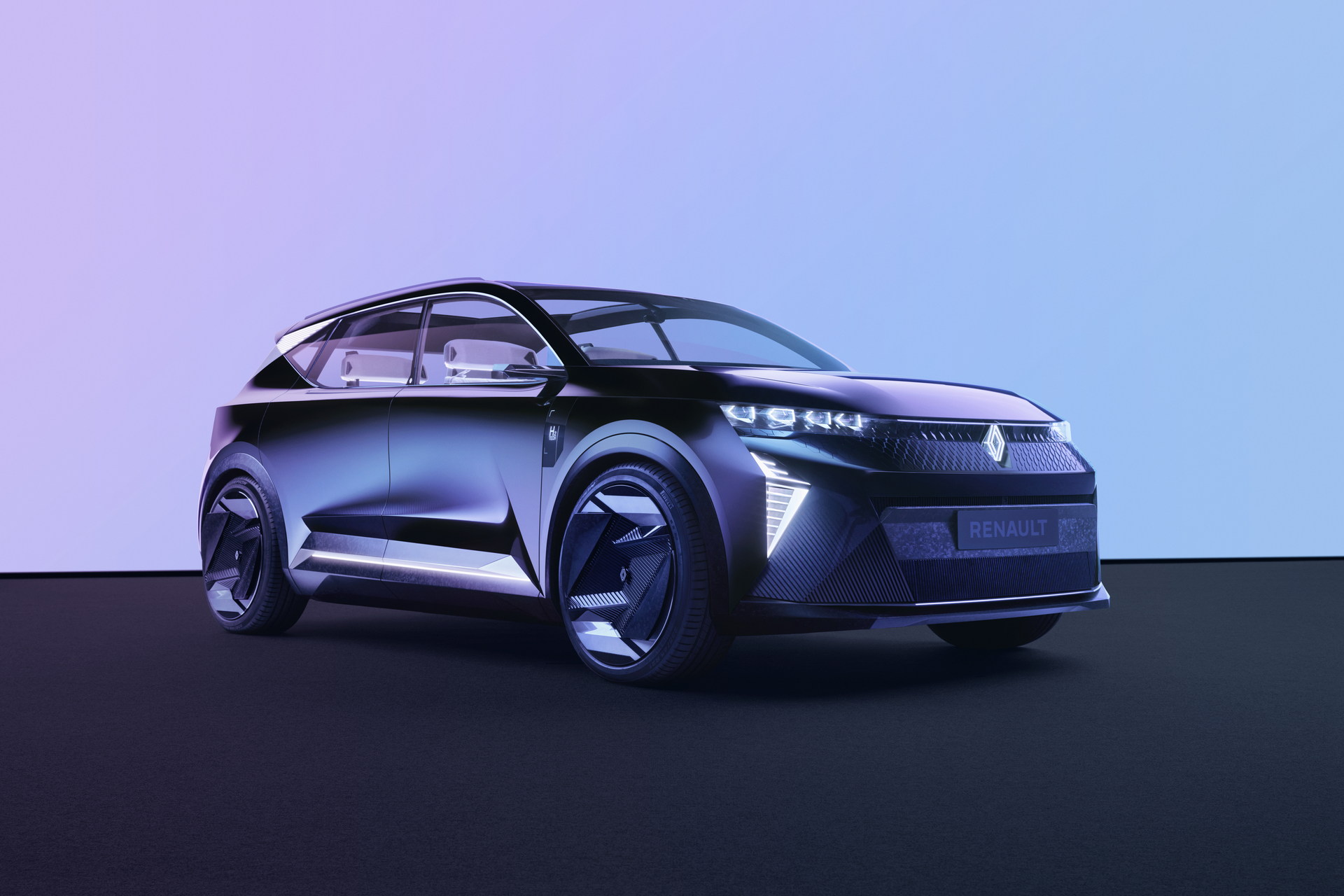We’ve updated this article with live images of the Ego e.Wave X from its world premiere at the Paris Motor Show that runs Oct 17-23, 2022. Check out our complete coverage of the show here.
Renault unveiled the much anticipated “hydrogen-powered” concept which surprisingly adopts the Scénic nameplate. The Renault Scénic Vision is radically different from all of its predecessors, coming with an SUV-style body that closely previews a production vehicle set to be unveiled in 2024. Also, it is fitted with an unconventional hybrid powertrain that combines an electric motor with a hydrogen fuel cell range extender.
The highlight of the concept is the H2-Tech technology which aims to reduce the downtime related to charging and the carbon footprint. The powertrain consists of a front-mounted electric motor producing 215 hp (160 kW / 218 PS), a range-extender hydrogen fuel cell generating 21 hp (16 kW / 22 PS), and a 40 kWh battery. This hybrid setup allows the vehicle to carry a twice as light battery for the same range. According to Renault, the Scénic Vision has a 75 percent smaller carbon footprint than a conventional battery electric vehicle. After 2030 when the hydrogen station network will (hopefully) have expanded, the company expects up to 800 km (497 miles) of range with a hydrogen refill time of around five minutes.
Also Read: 2024 Renault Scenic E-Tech Coming To Reclaim The Practicality Crown
The concept that is based on an experimental platform has a larger footprint than the Mégane E-Tech measuring 4,490 mm (176.8 inches) long, 1,900 mm (74.8 inches) wide, and 1,590 mm (62.6 inches) tall, with a wheelbase of 2,835 mm (111.6 inches). According to Renault, the weight is 1,700 kg (3,748 pounds), which is close to the highest-spec trim of the Mégane despite the addition of the hydrogen fuel cell.
In terms of styling, the concept adopts the latest evolution of Renault’s design language with a heavily sculpted body, strong character lines and futuristic details. The two-box silhouette is bridging the gap between SUVs and hatchbacks, distancing itself from the MPV past of the Scénic. At the front, the thin LED headlights have an aggressive look, with additional LED units positioned lower and new kinds of textiles for the grille and bumper.
The profile is quite dynamic thanks to the unconventional surfacing on the doors and the sci-fi 21-inch wheels. At the back things are more down-to-earth with boomerang-shaped LED taillights, an illuminated badge and a prominent rear spoiler. Chief designer Gilles Vidal said that the concept is 90 percent ready for production, while stating that the exterior design will evolve.
See Also: Renault CEO Says Mandating EVs Too Soon Could Hurt The Environment
Moving inside the cabin from the frameless suicide doors that improve accessibility we come across a concept-style interior. Features include wide floating-style seats, an array of small rectangle-shaped screens (we counted eight of them), a wraparound screen on the top of the dashboard, a yoke steering wheel, and fancy ambient lighting.
The widescreen can transmit live feed from an external camera, enlarging the driver’s field of vision by 24 percent. A facial recognition system automatically opens the doors and adjusts the vehicle settings to the driver’s profile and each seat is equipped with microphones and speakers for personal audio and optimal communication between passengers. There is also a Safety Coach making sure that the driver is healthy and pays attention to the road while helping them improve their driving habits.
In terms of materials, the Scénic Vision is a testament to Renault’s eco-friendly mindset and focus on sustainability. Over 70 percent of the materials used on the vehicle are recycled, with 95 percent being recyclable. The interior is leather-free with recycled low-carbon polyester for the upholstery, while 30 percent of the plastic is biosourced.
As we mentioned earlier, the concept previews a production model that will be unveiled in 2024 – most likely the fifth generation of the Scénic. This one will trade the electric-hydrogen powertrain for a more conventional battery electric powertrain and will be based on a stretched version of the CMF-EV architecture that the Renault-Nissan-Mitsubishi alliance will widely use in the coming years.
As for the use of hydrogen, Renault is already offering production LCVs with fuel cells under the HYVIA brand and will continue the development of the experimental hydrogen-electric architecture for potential use in future models.




